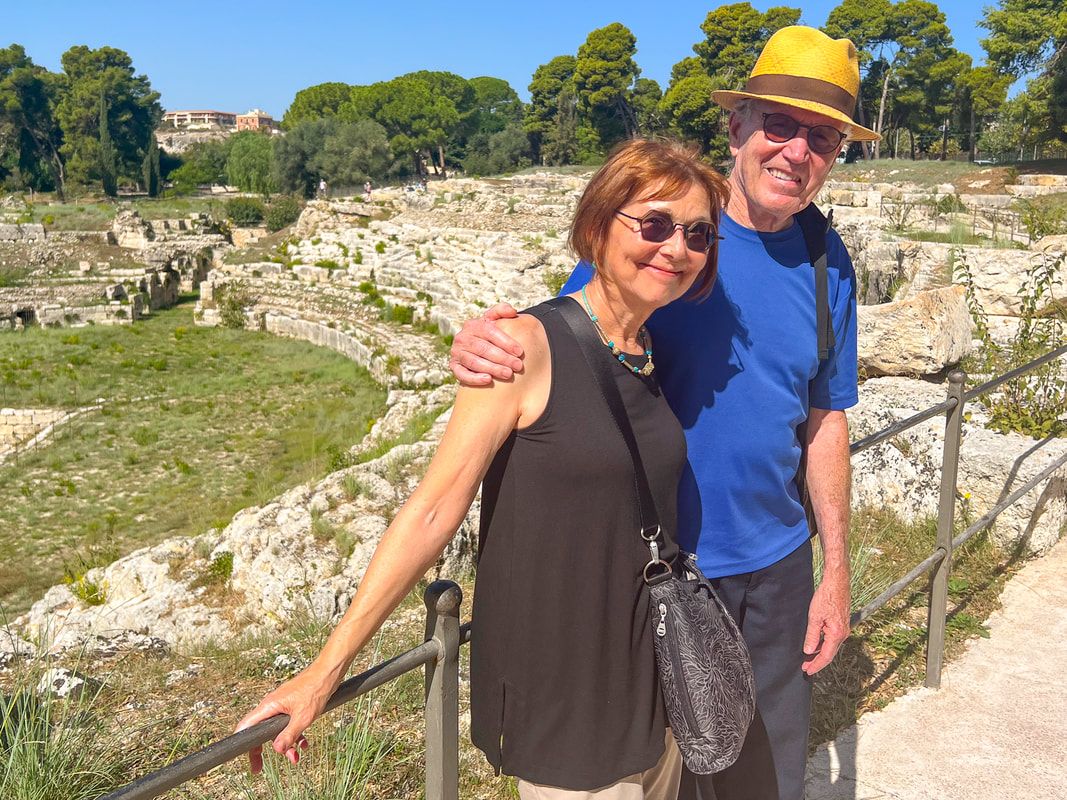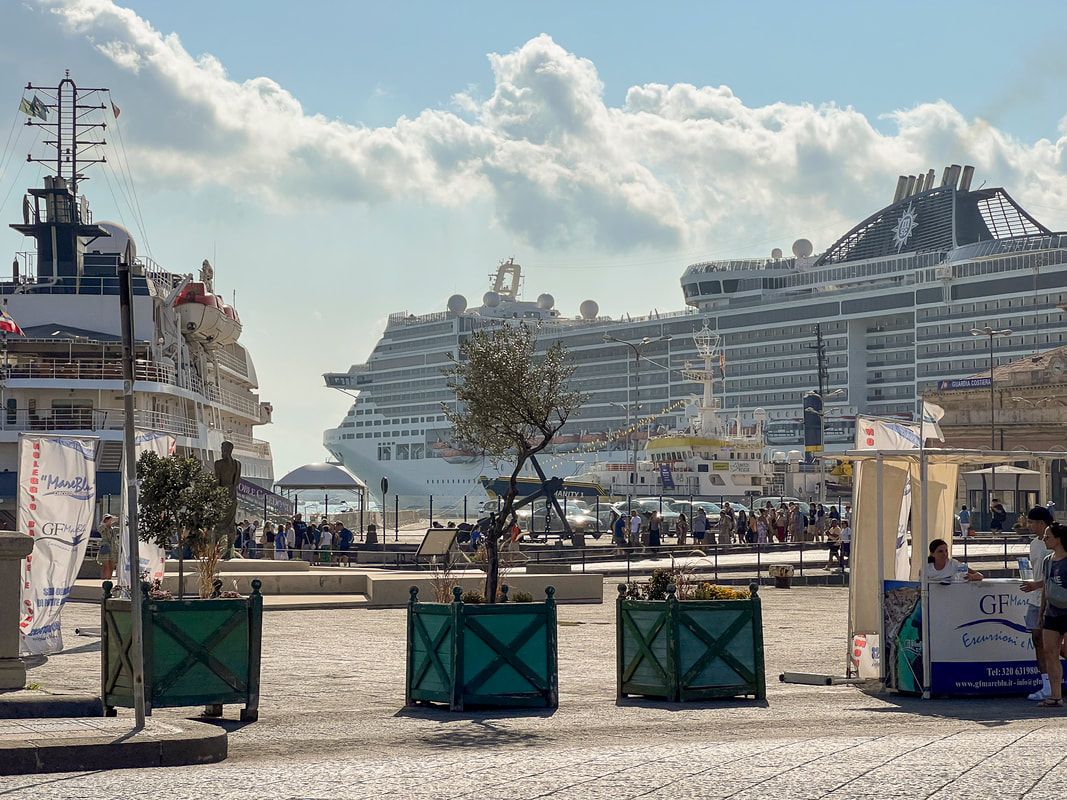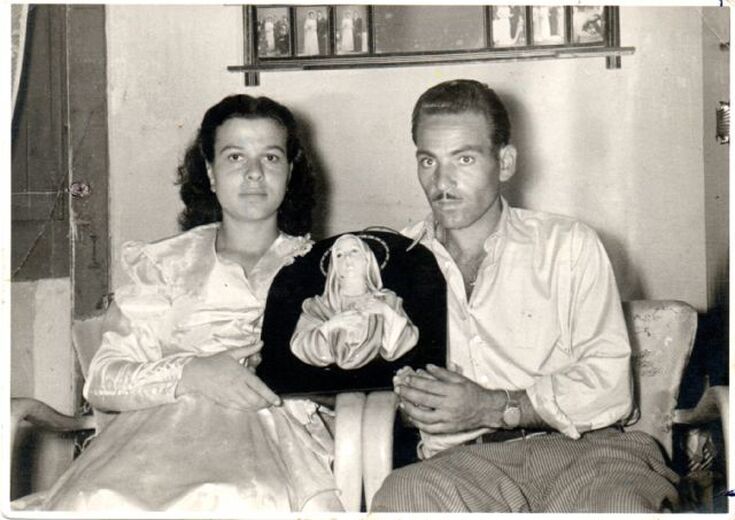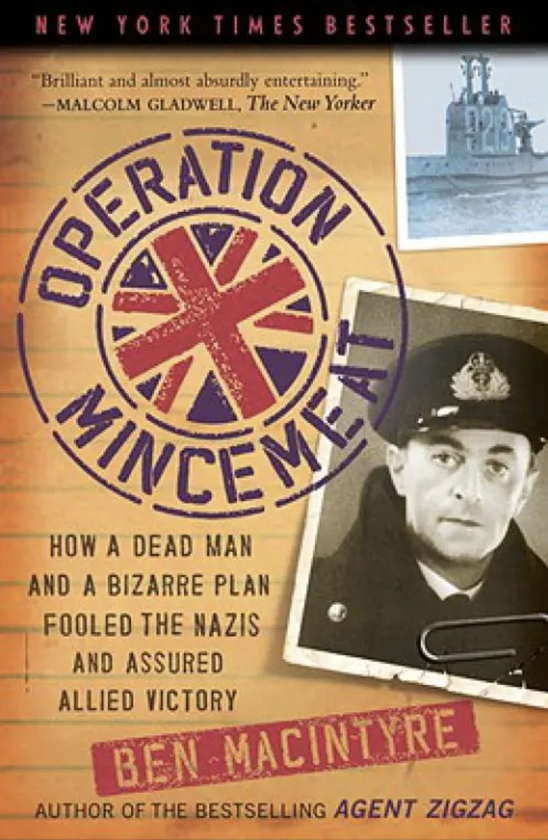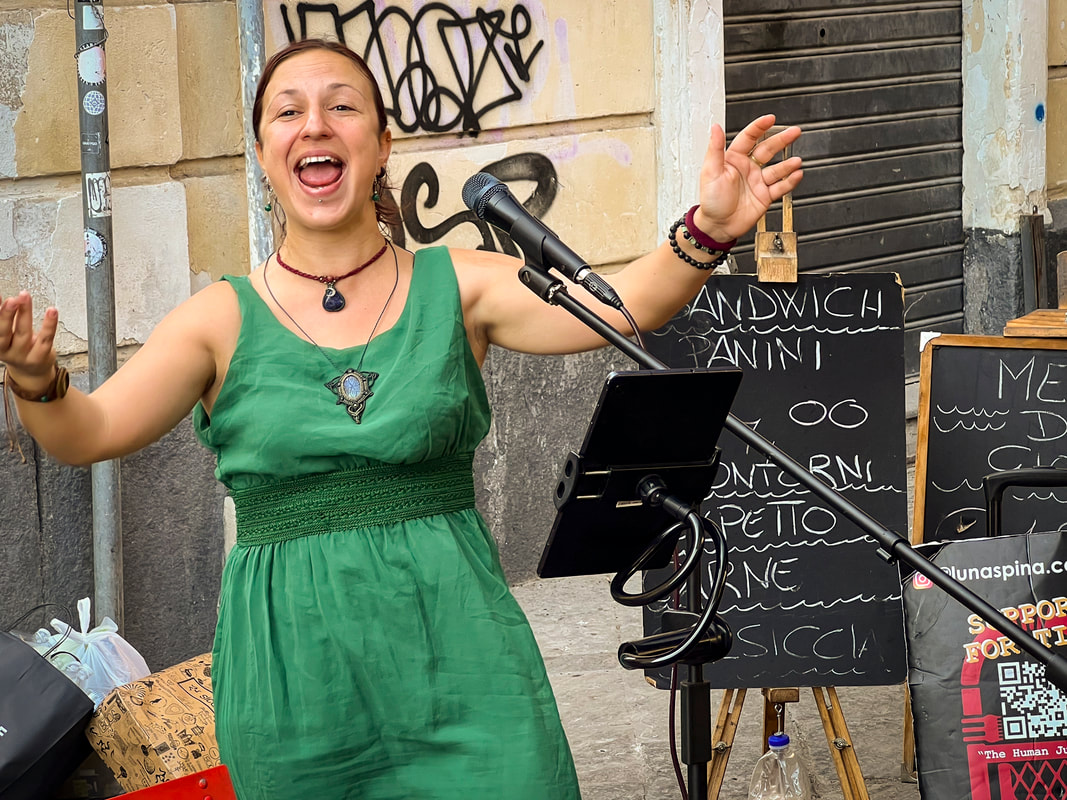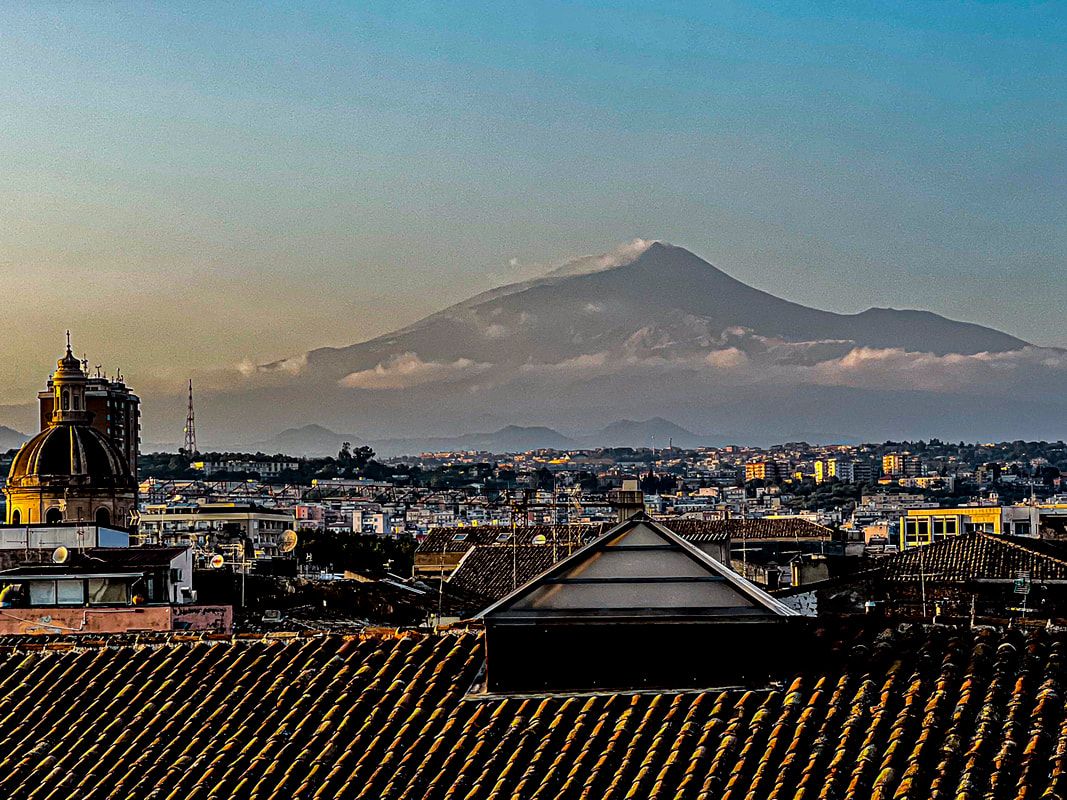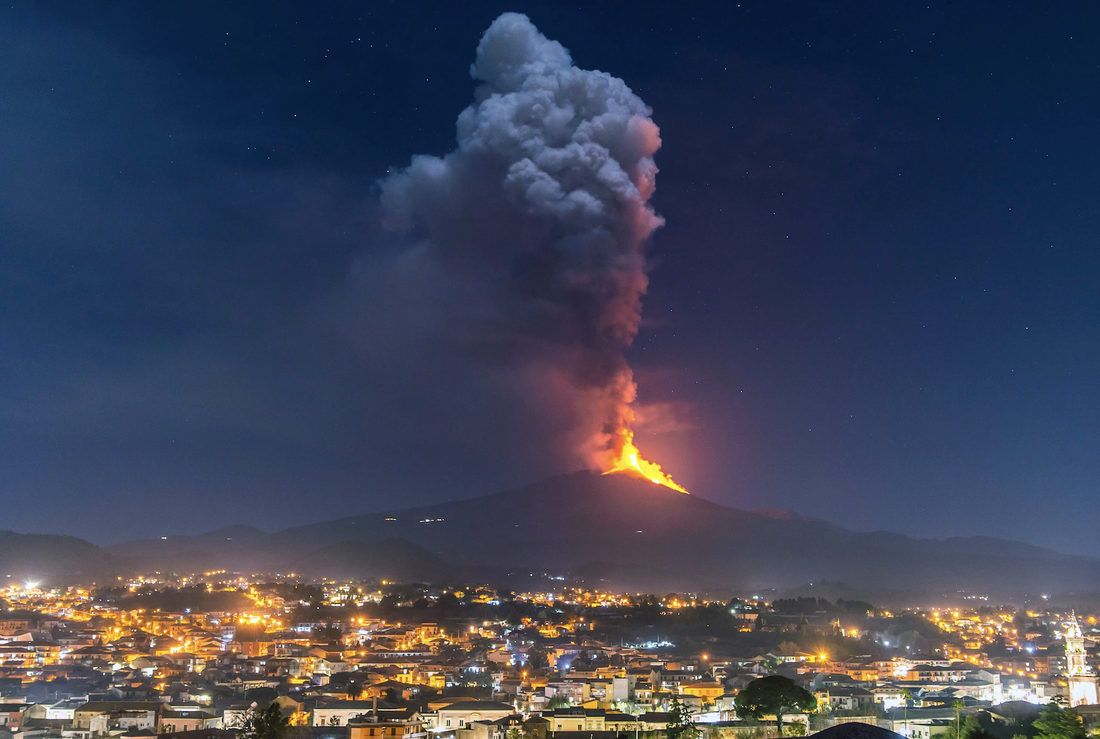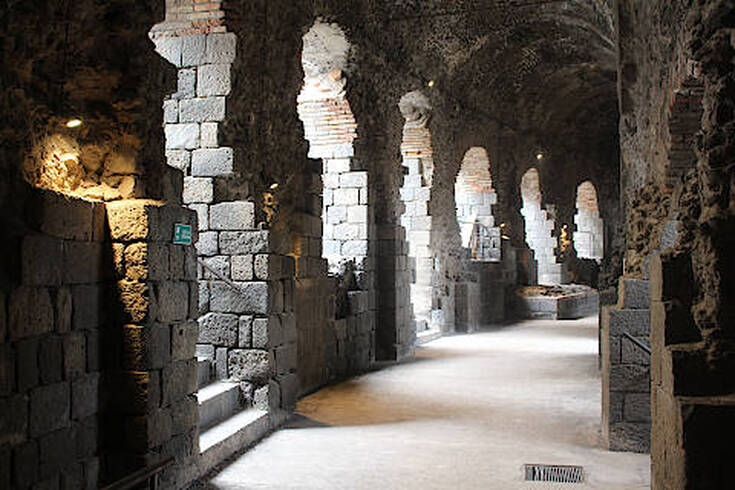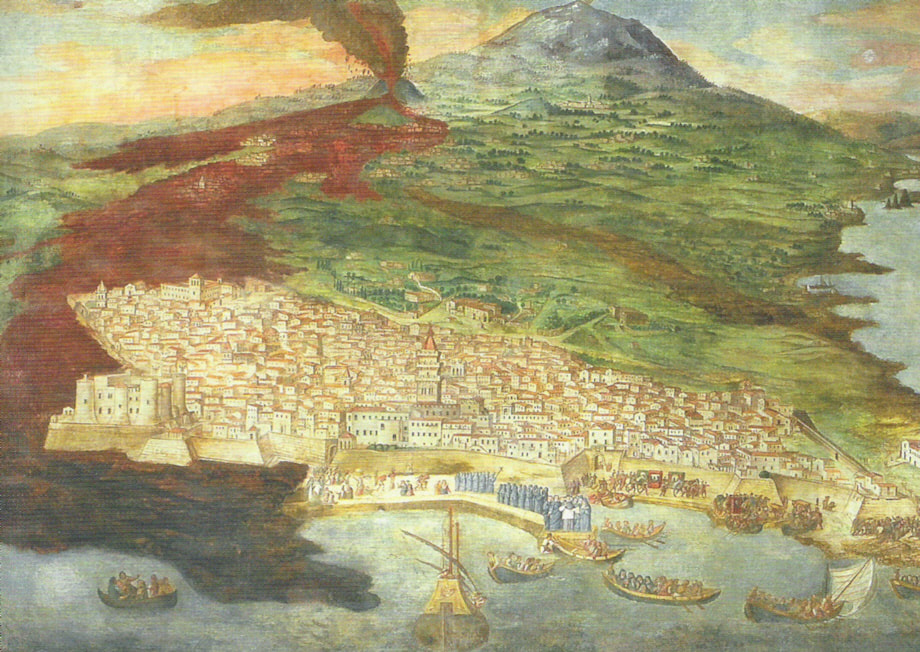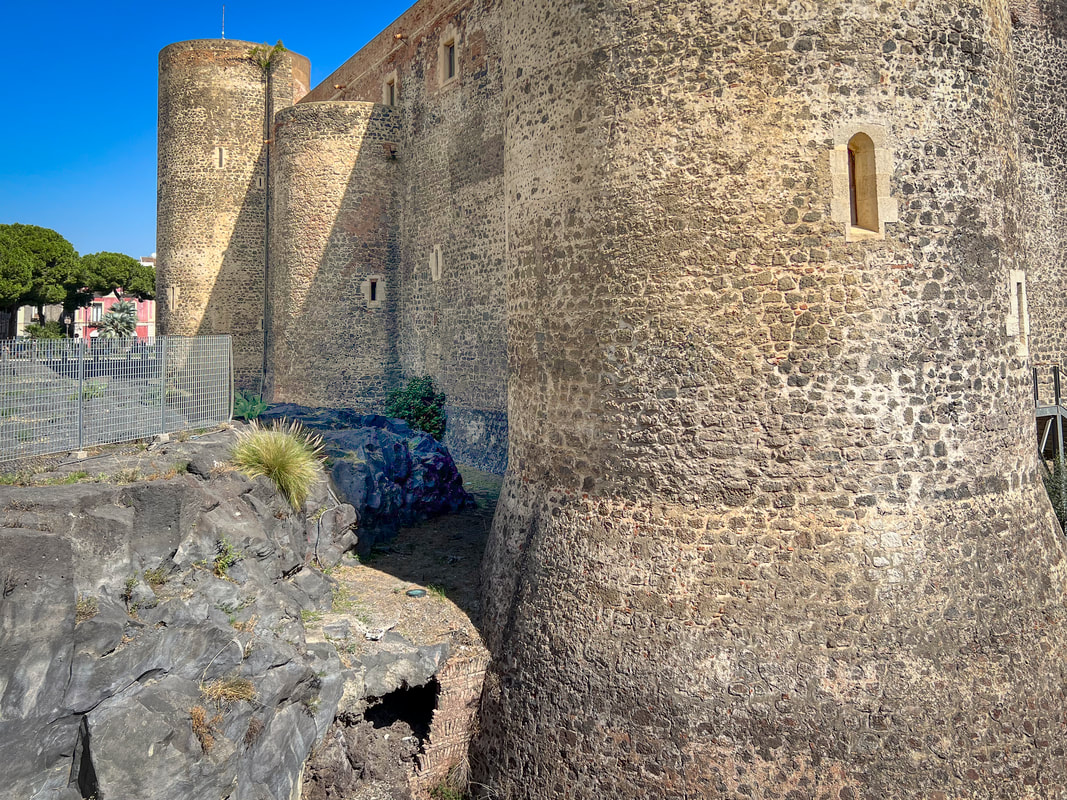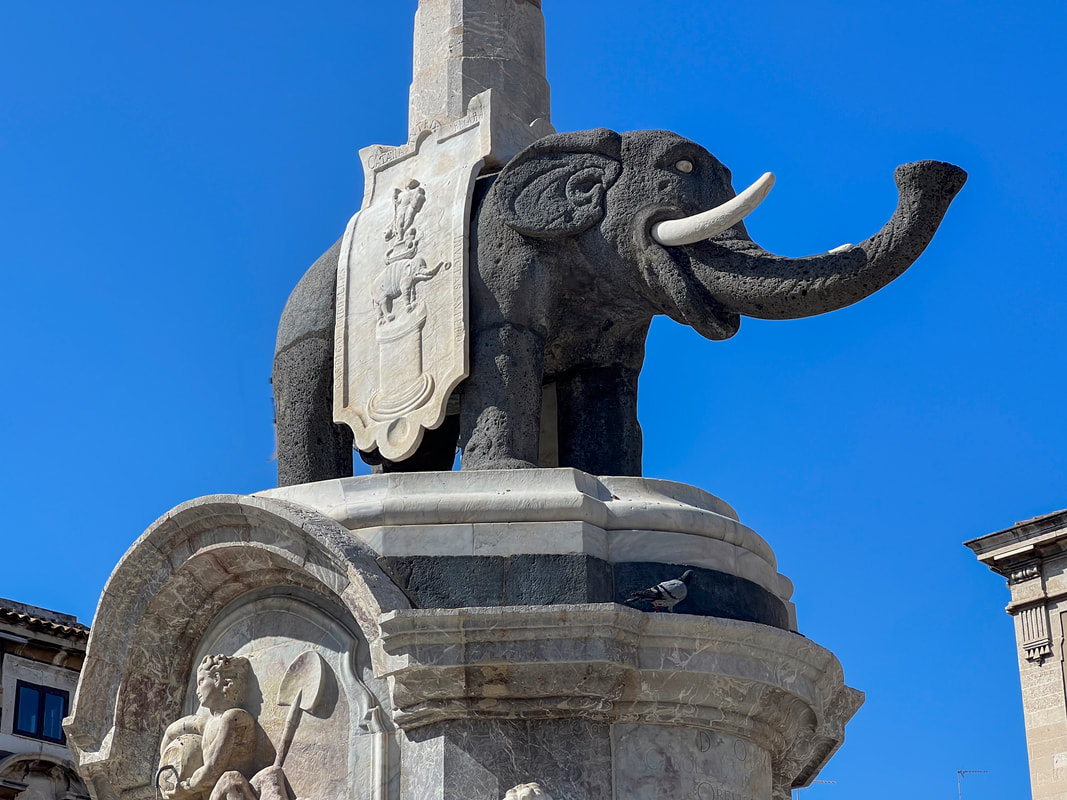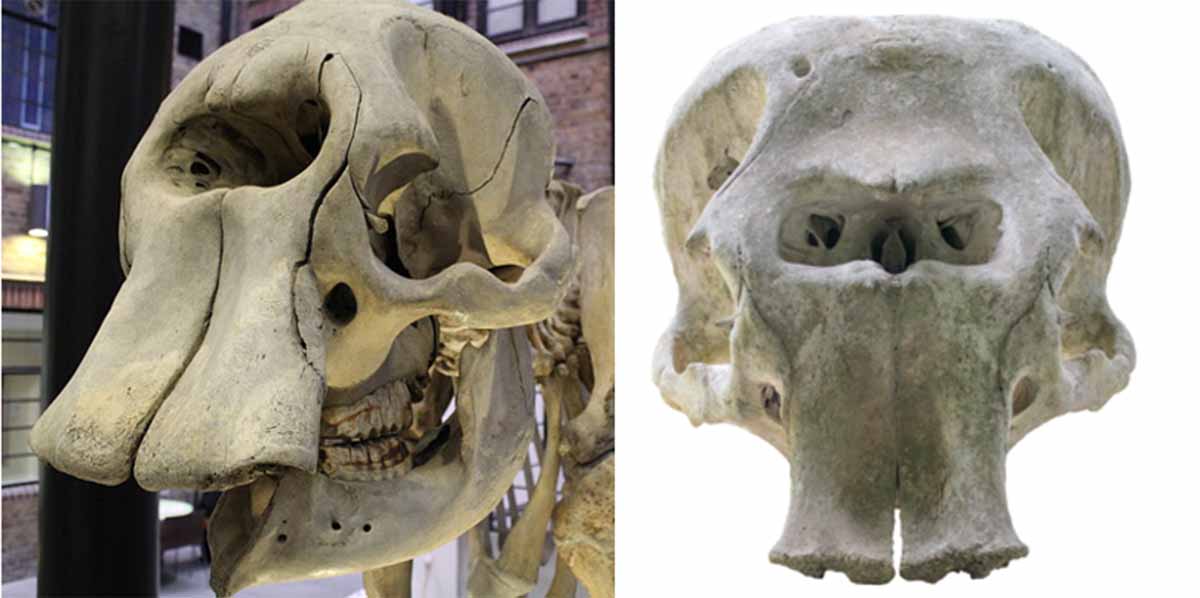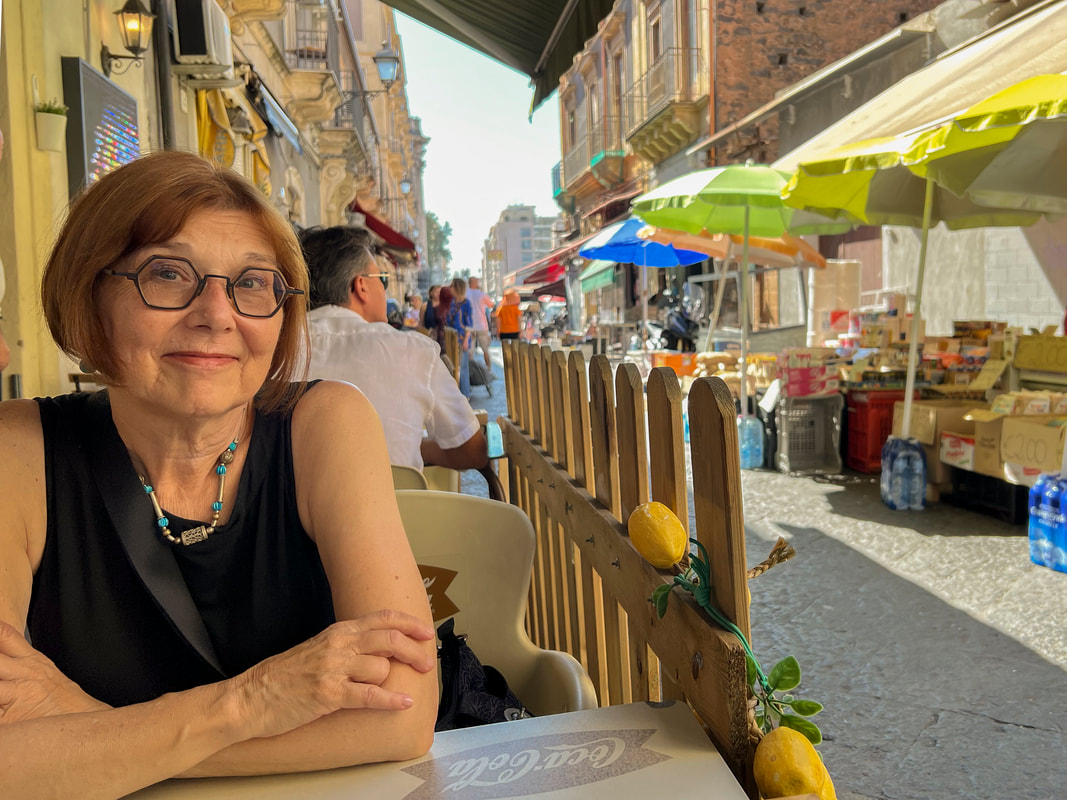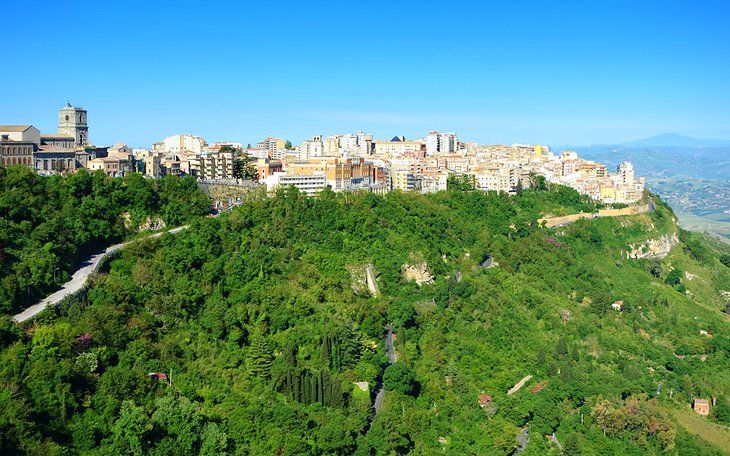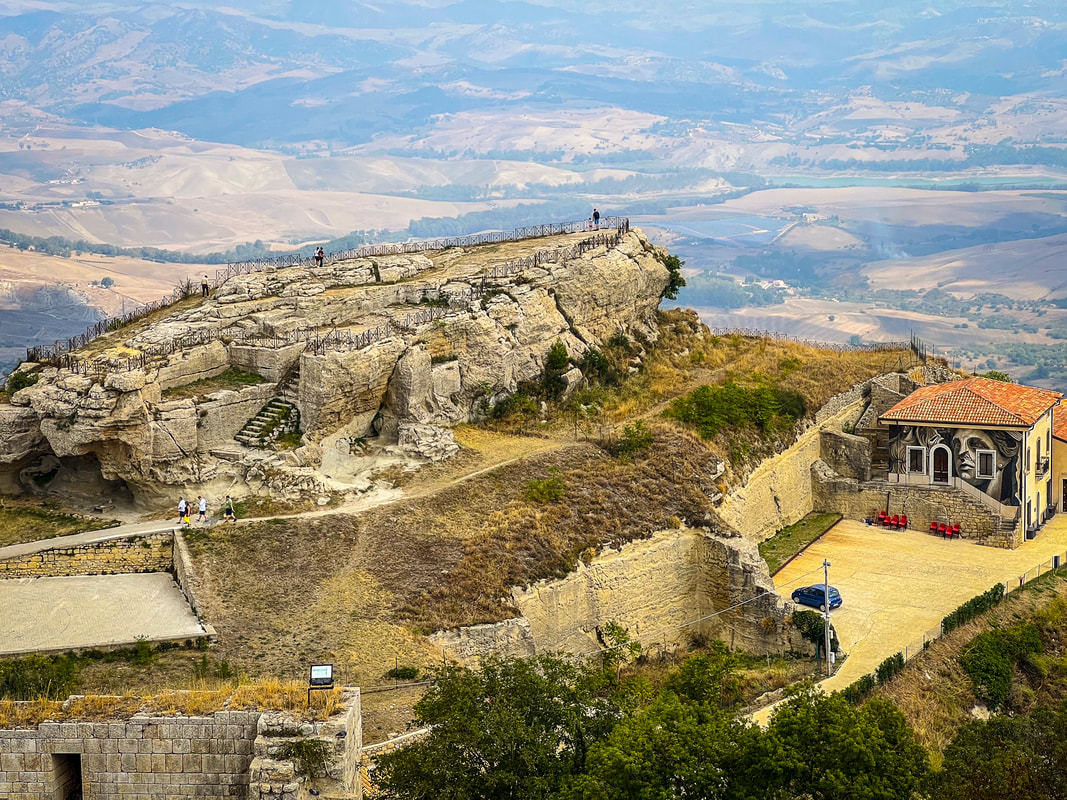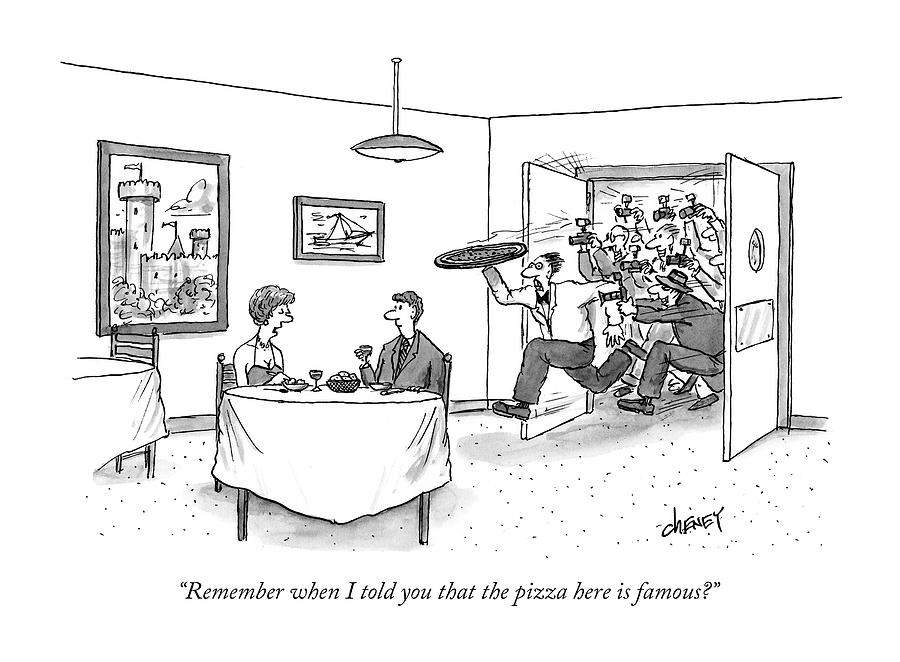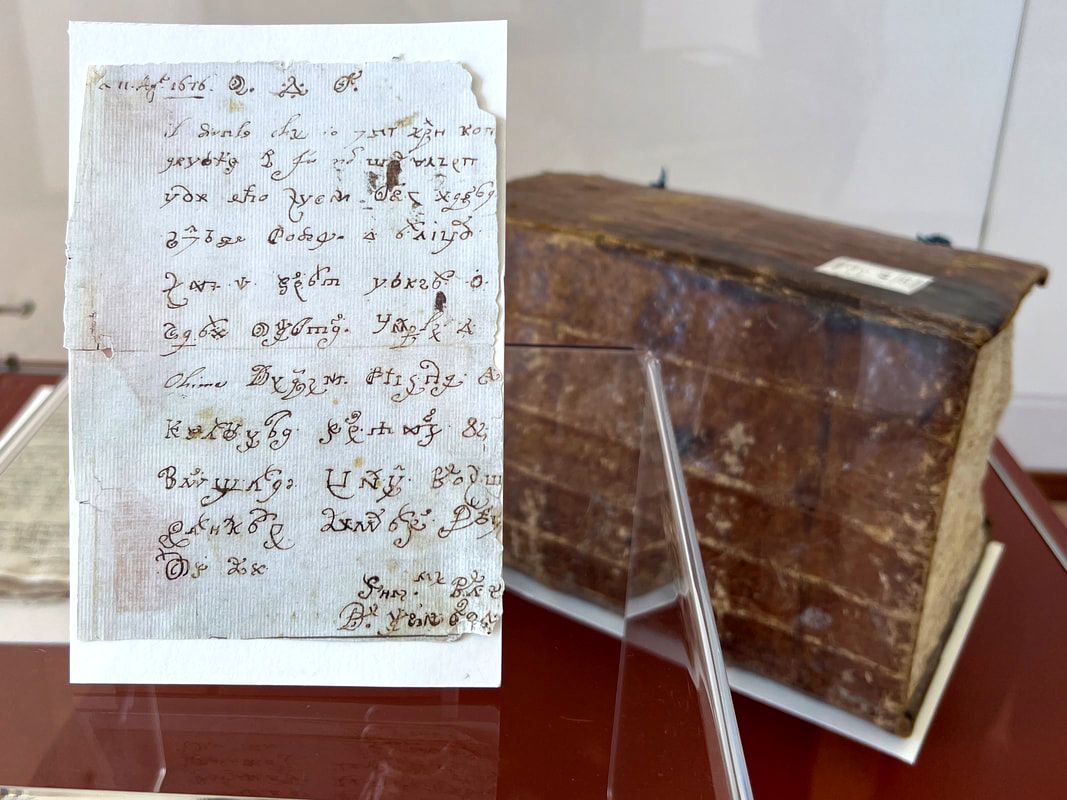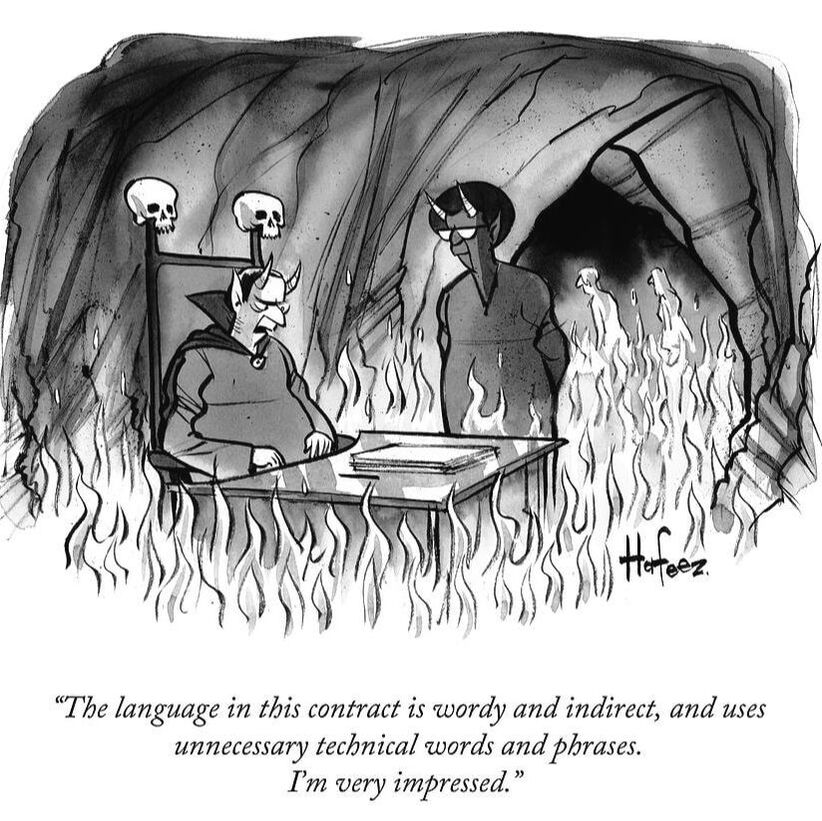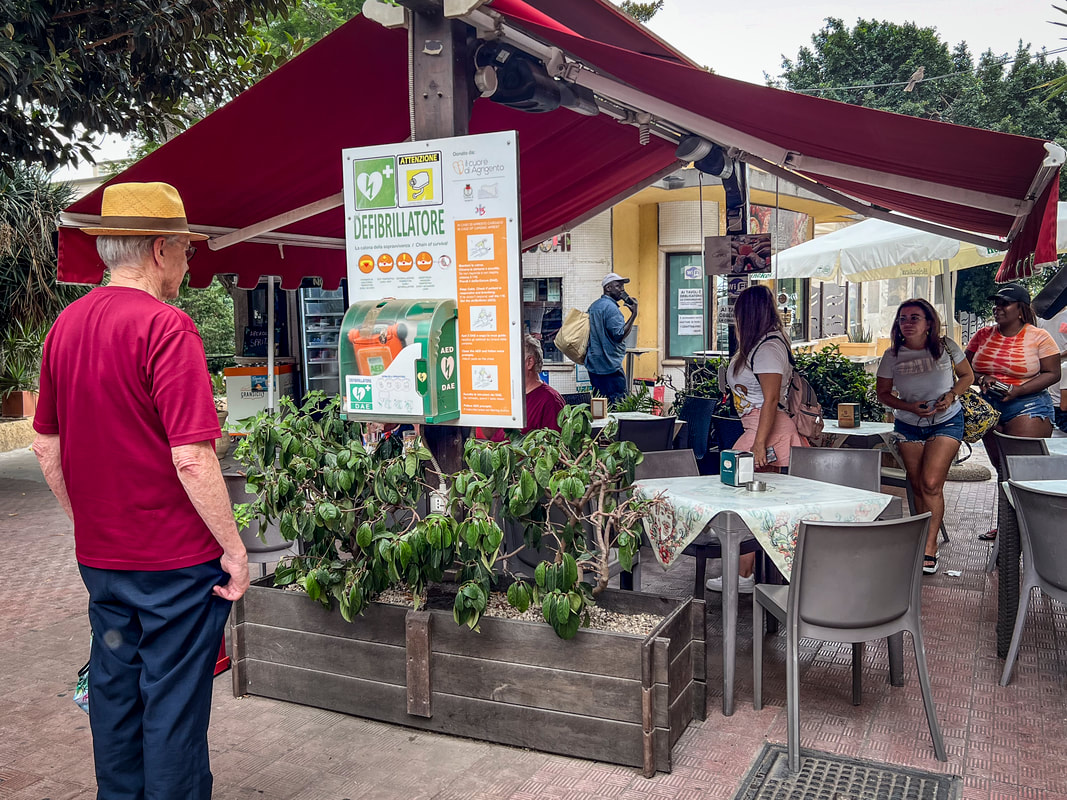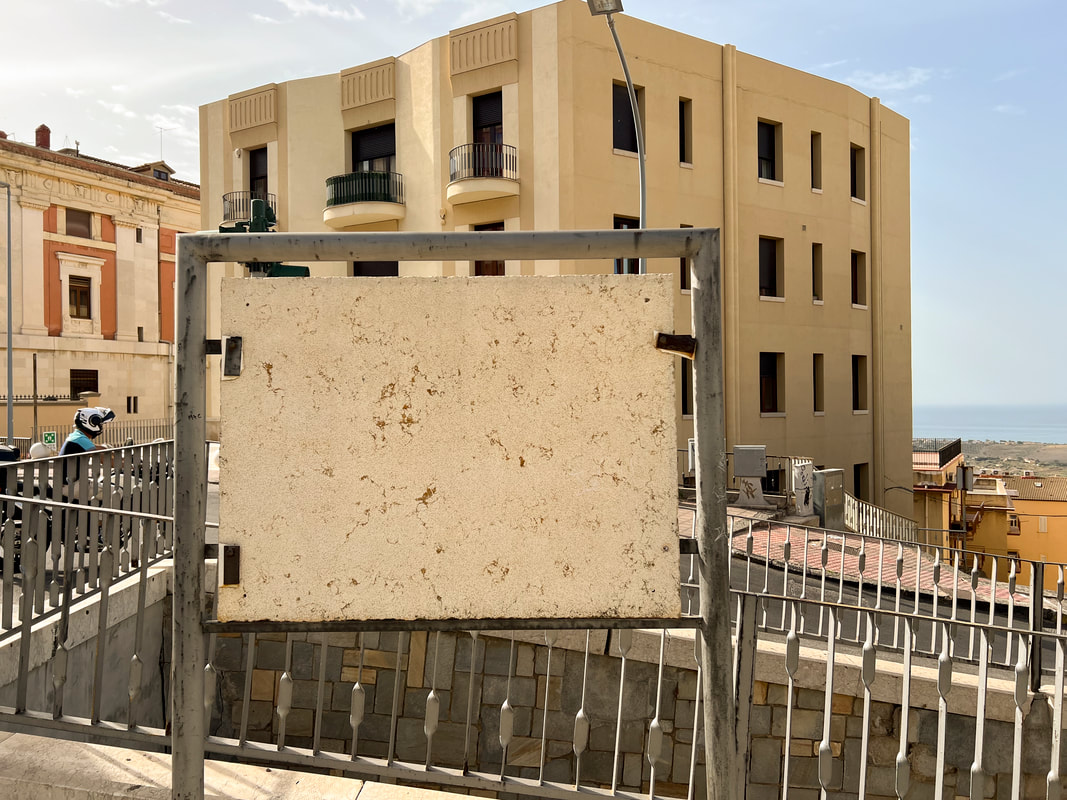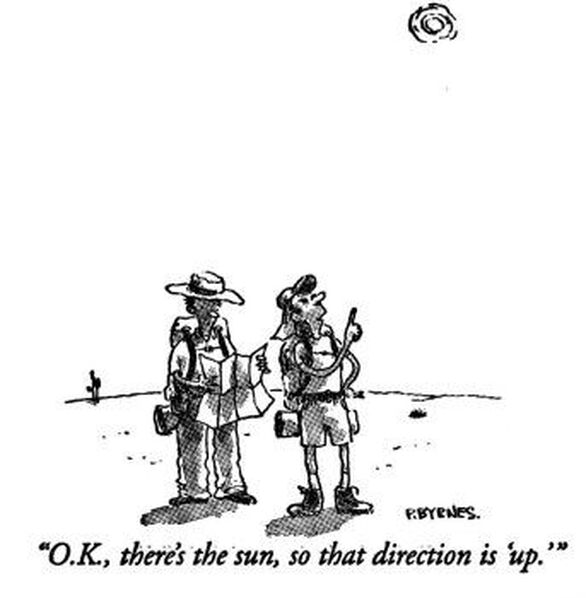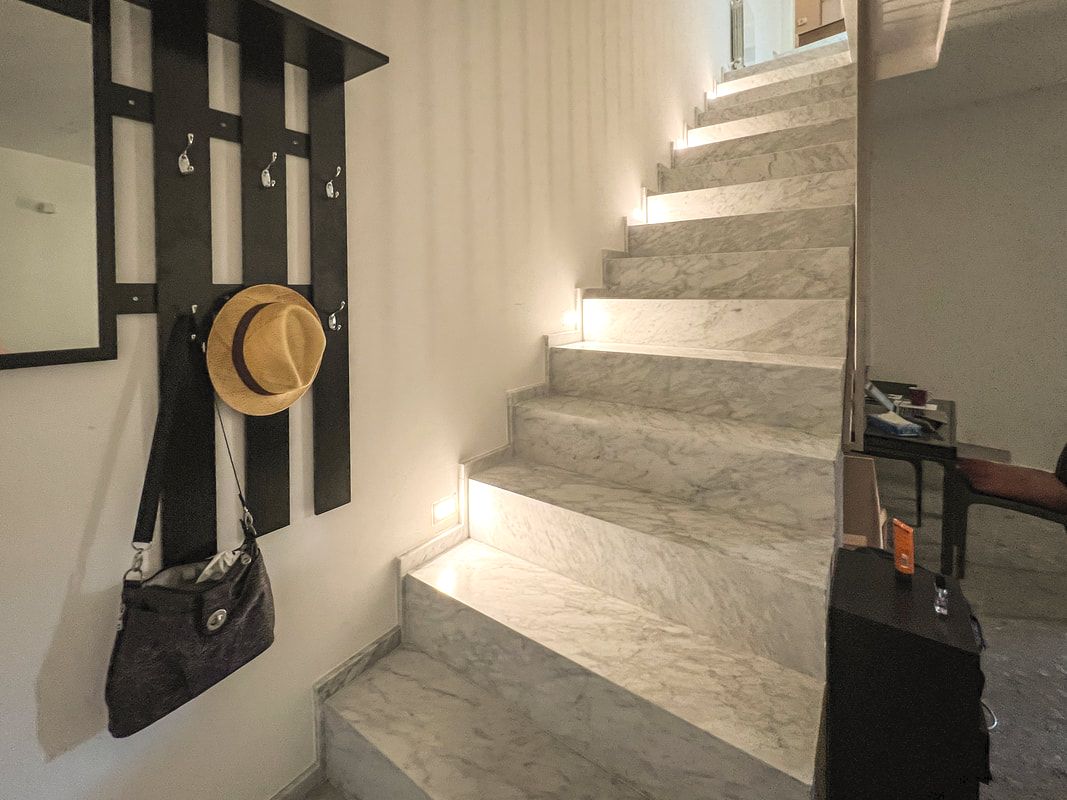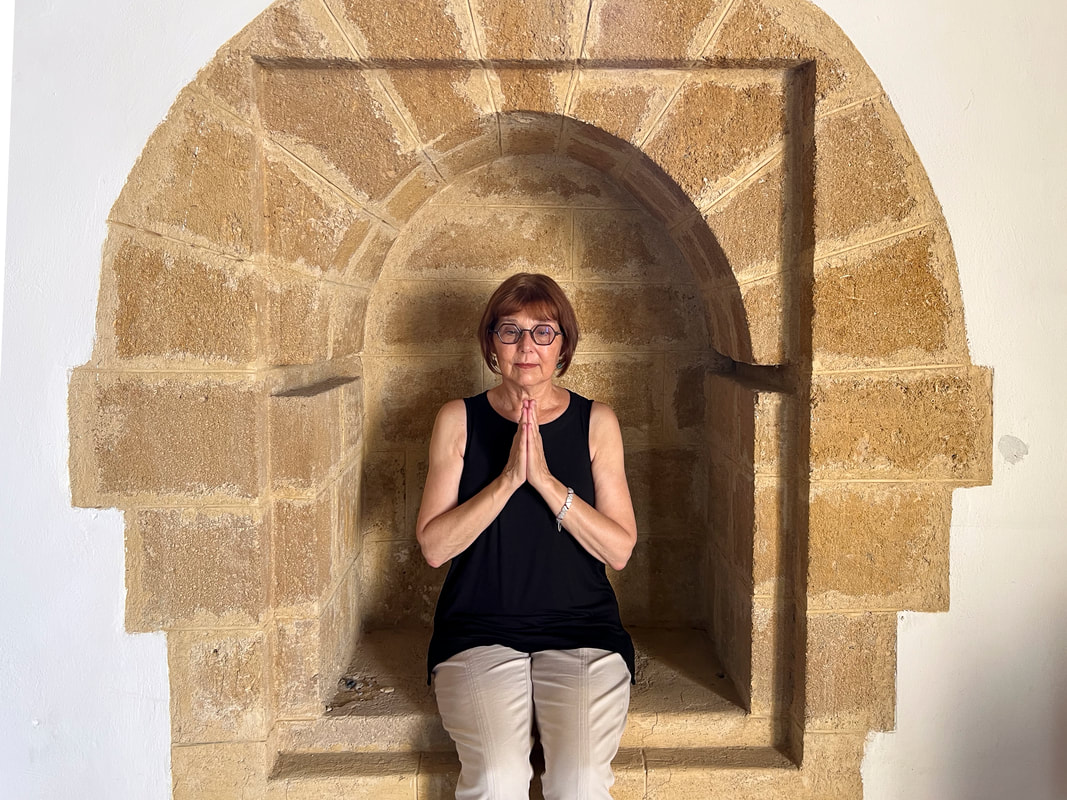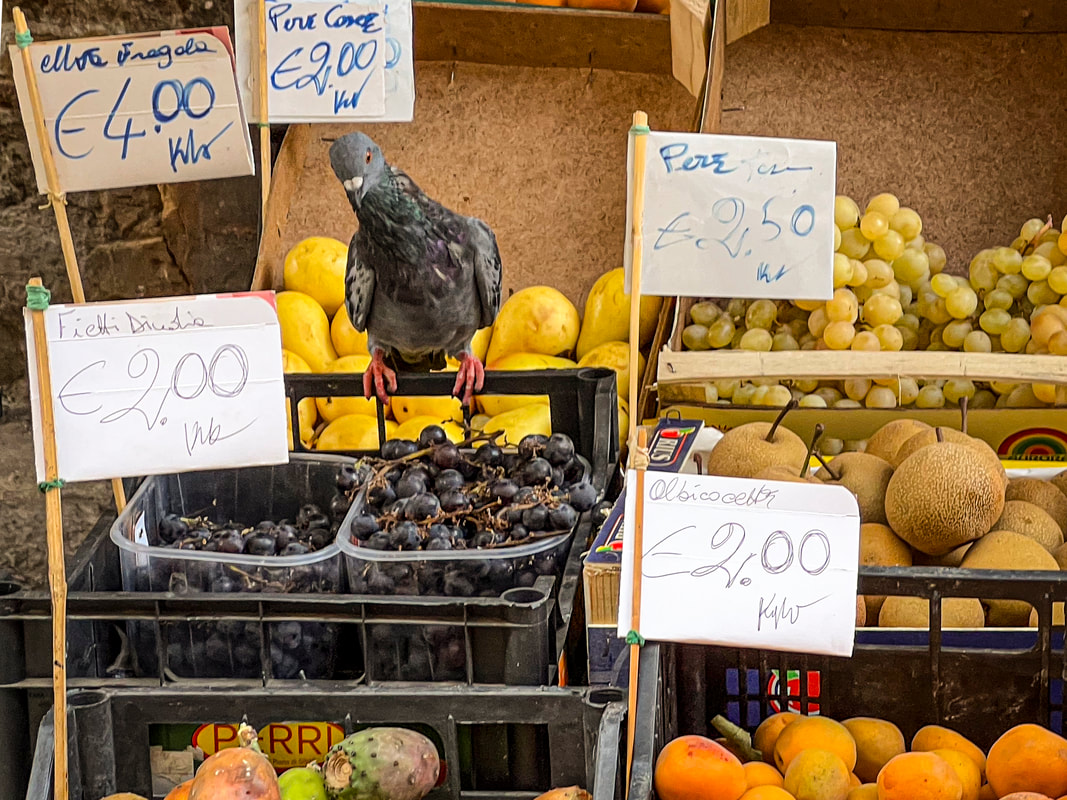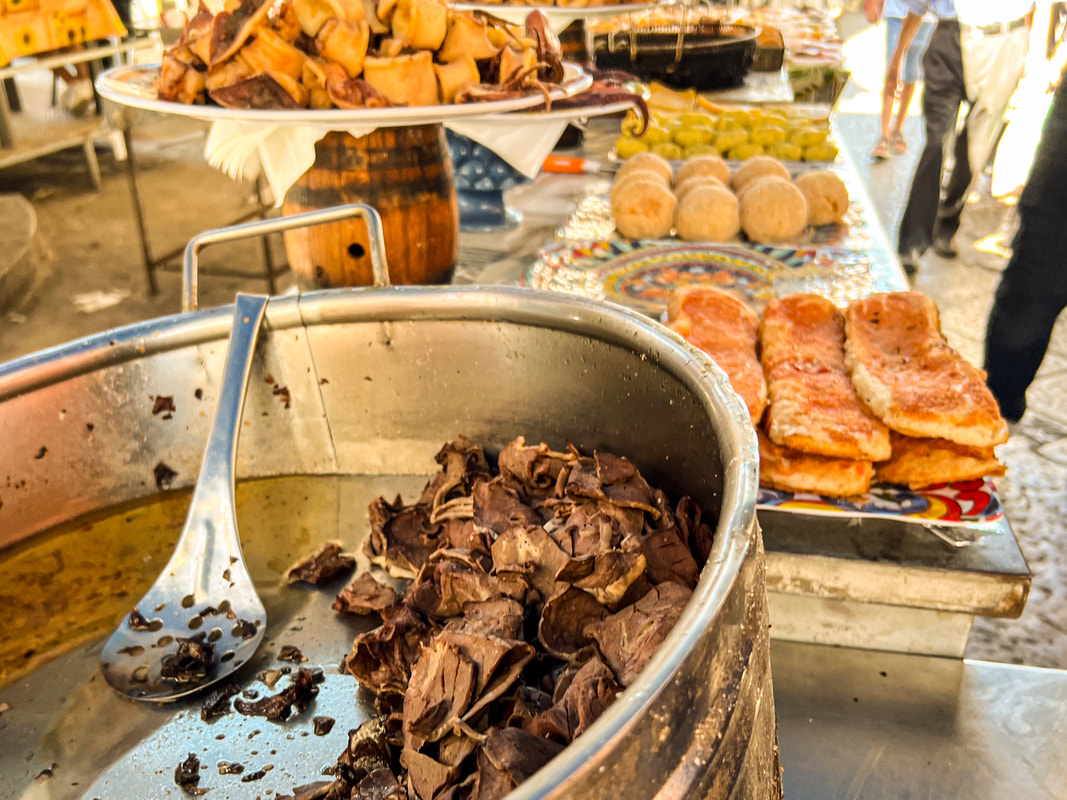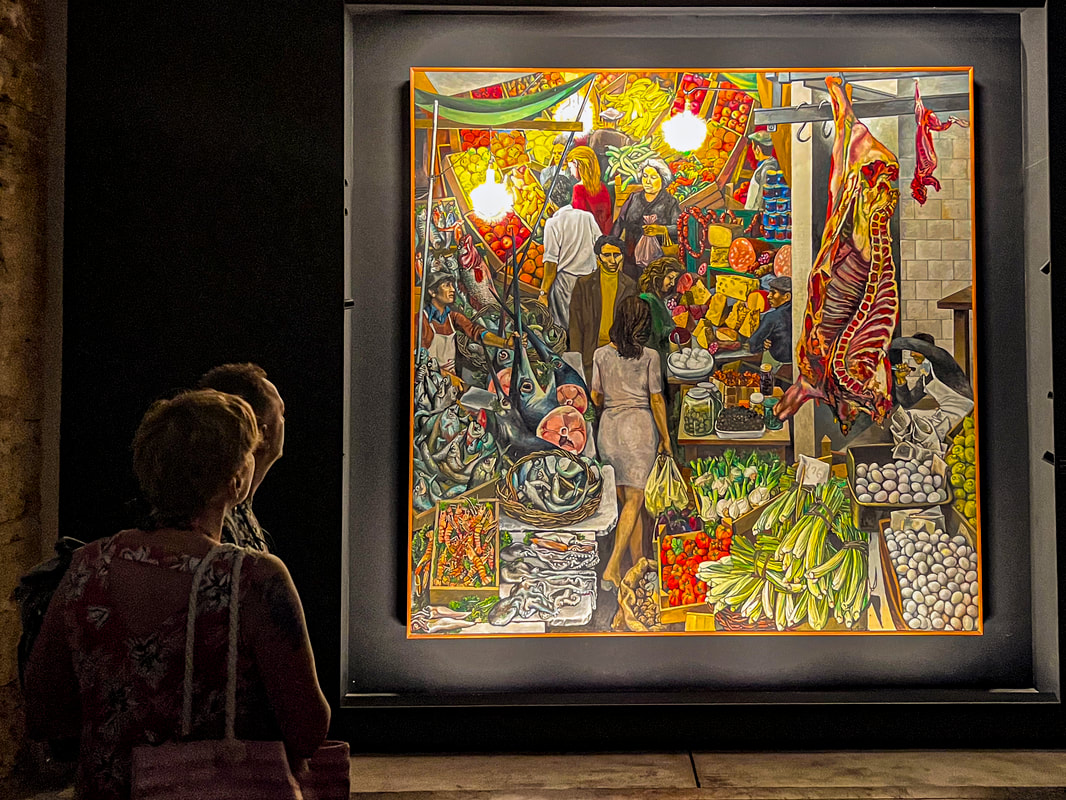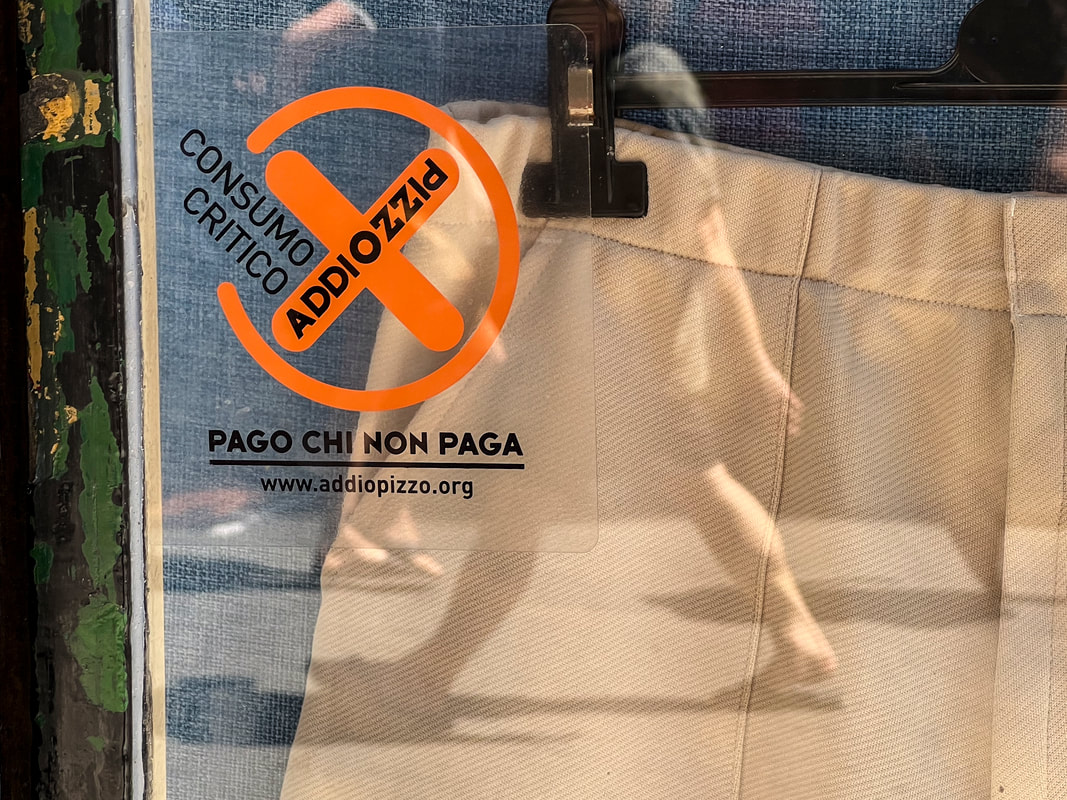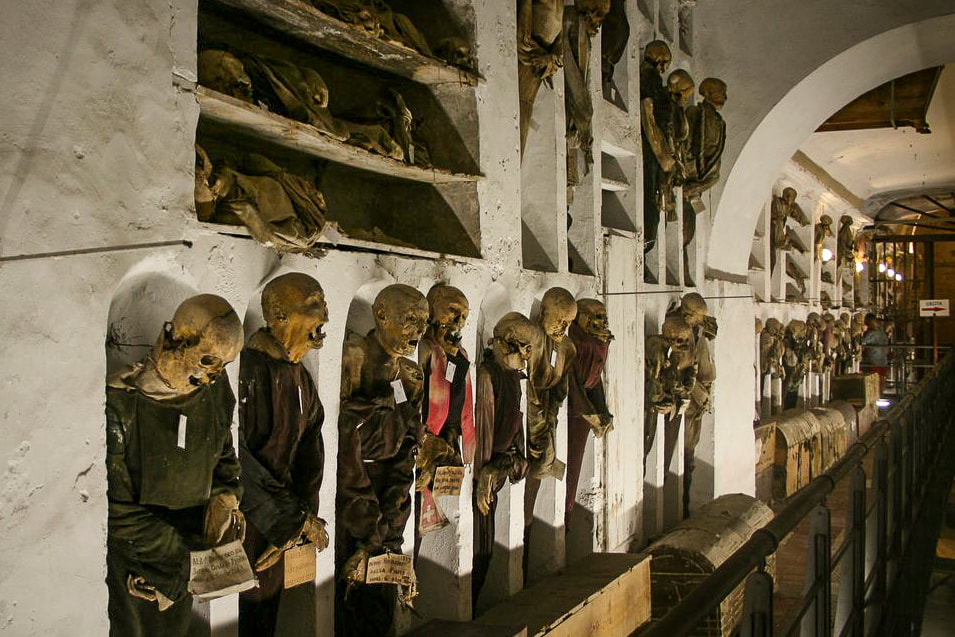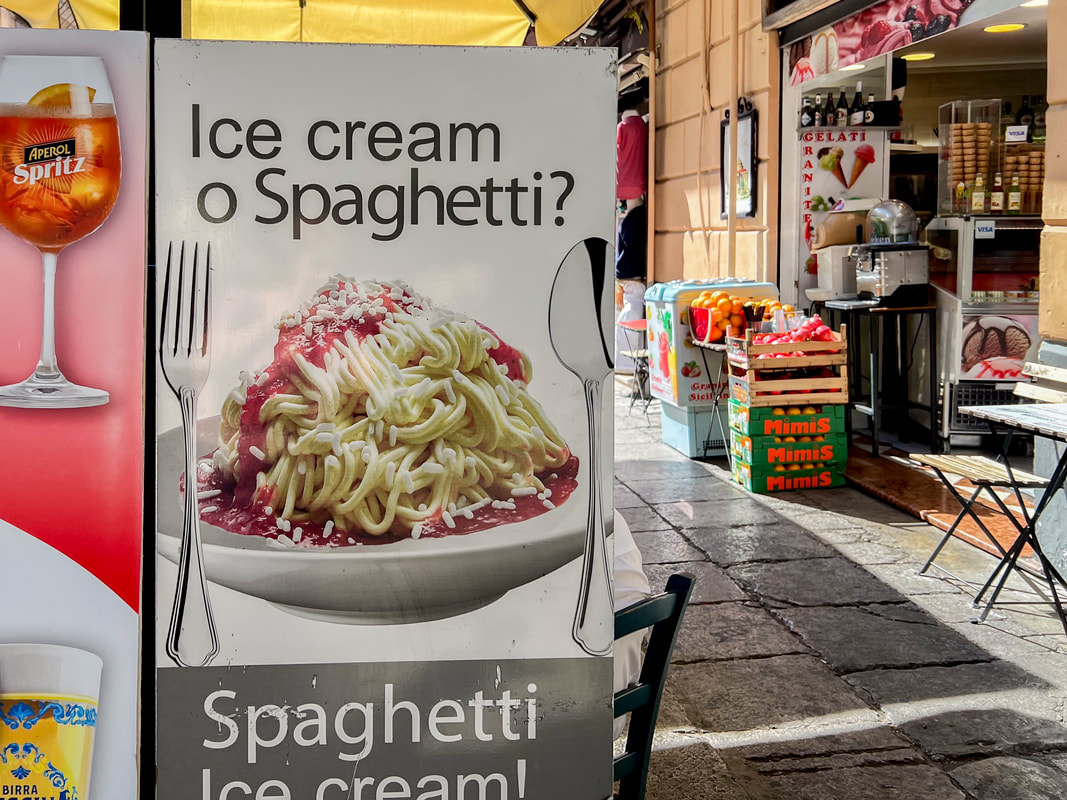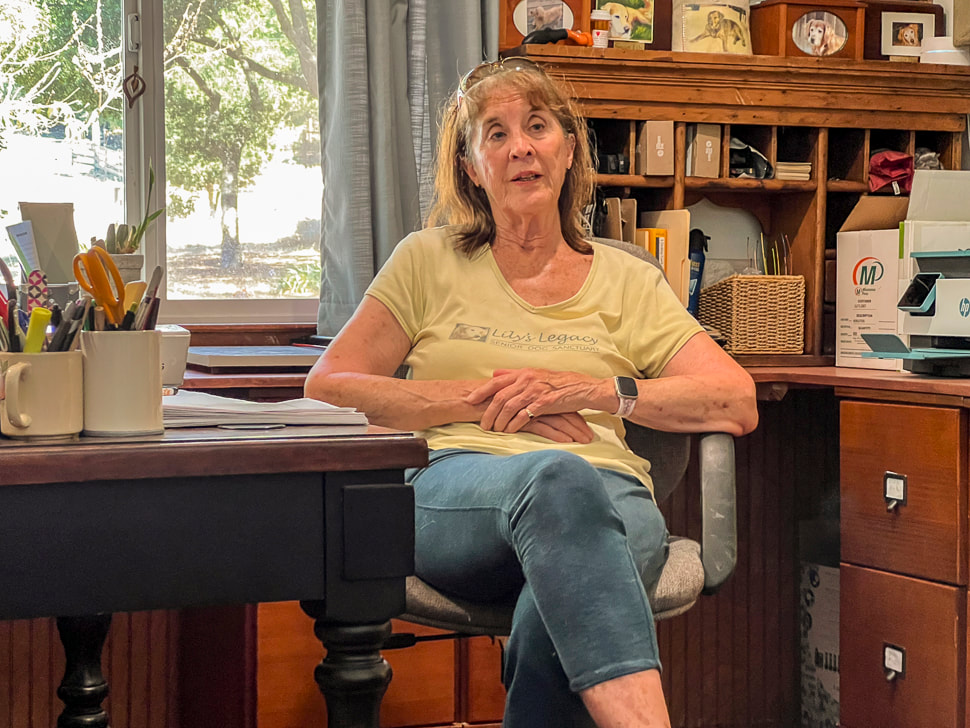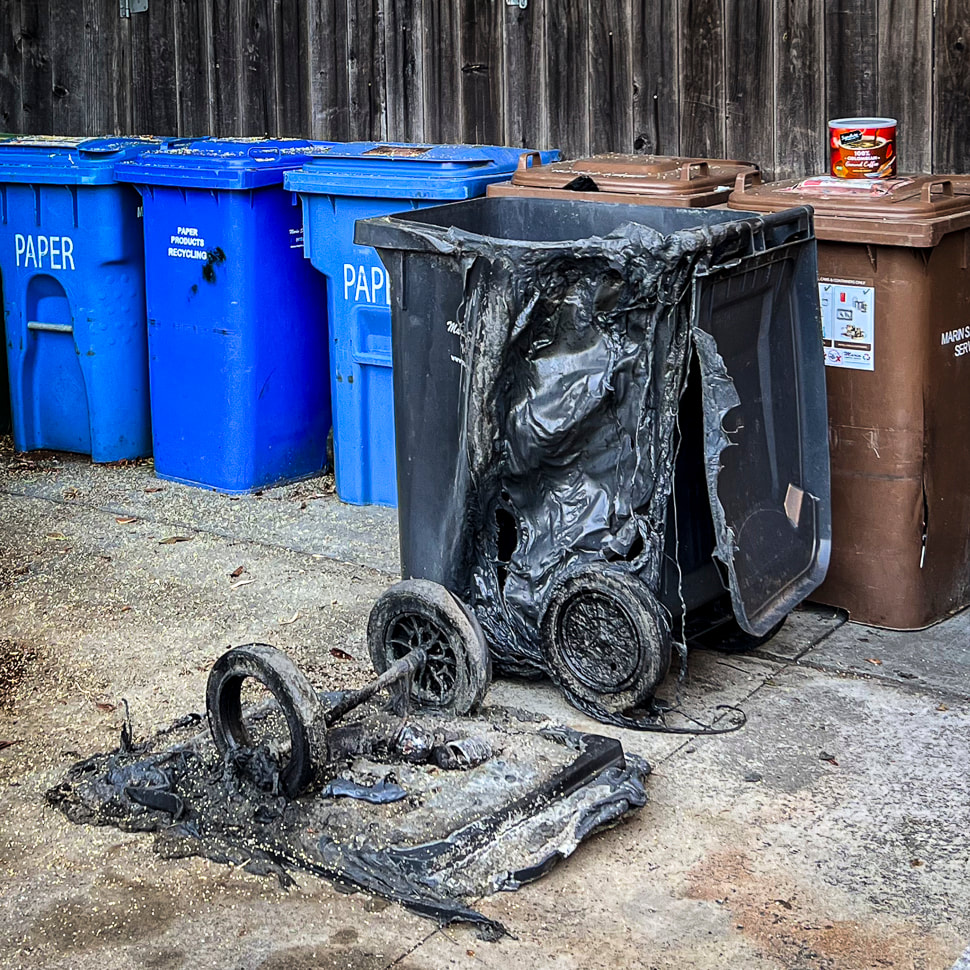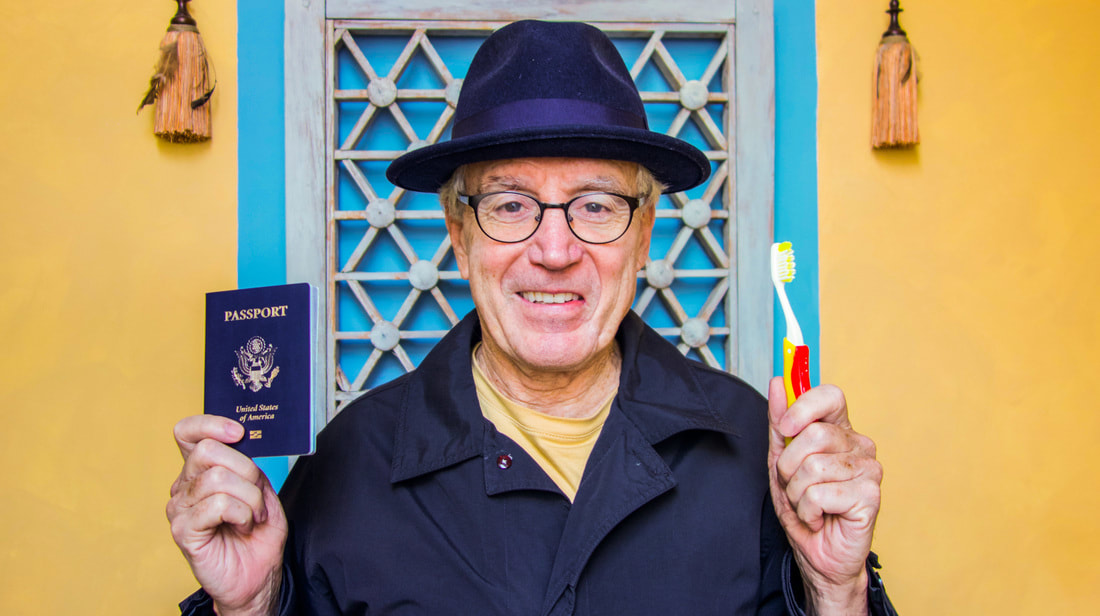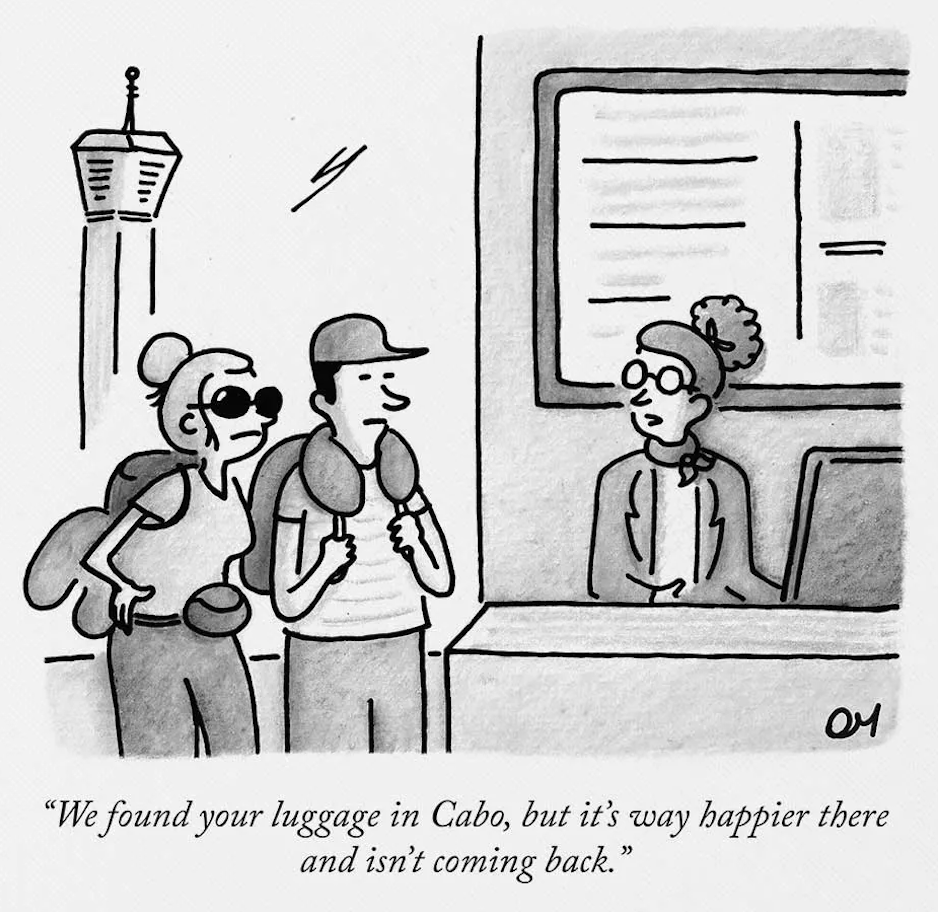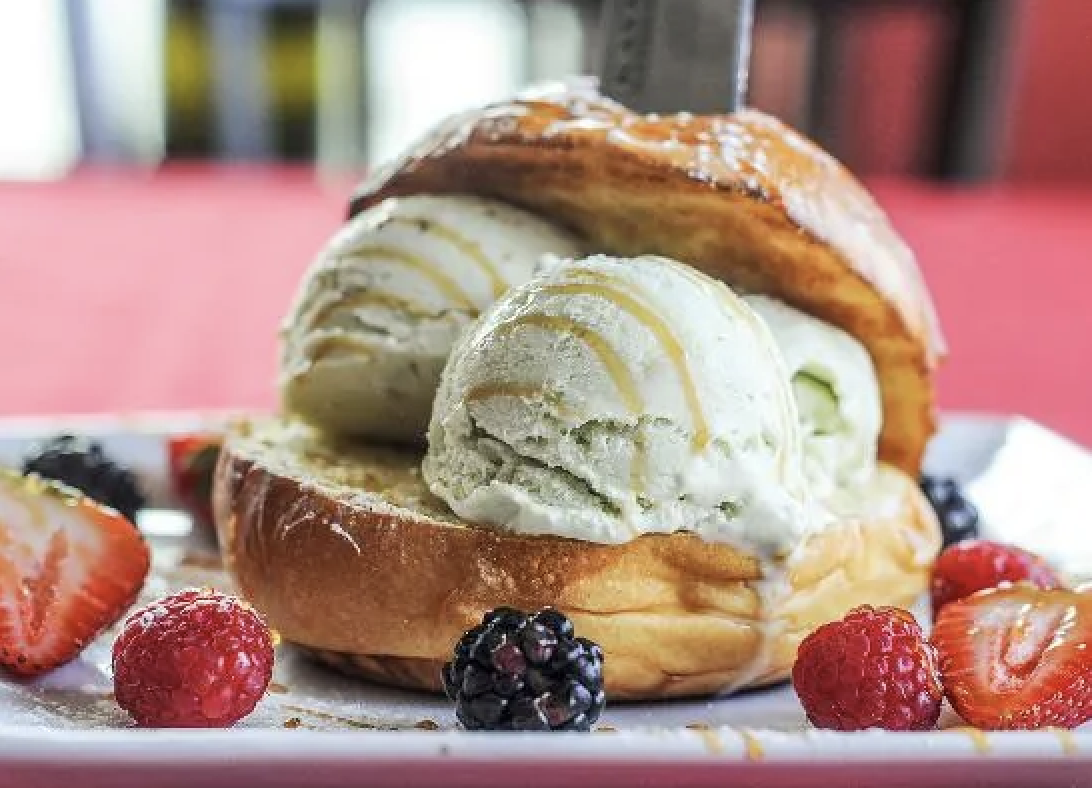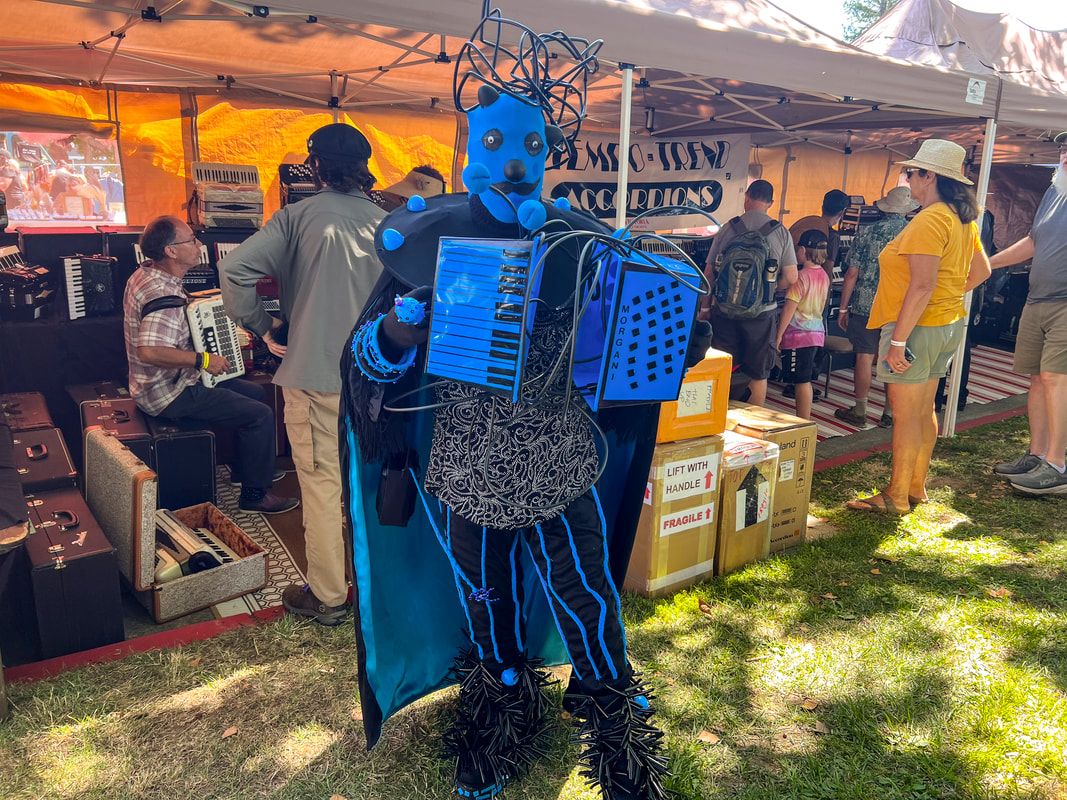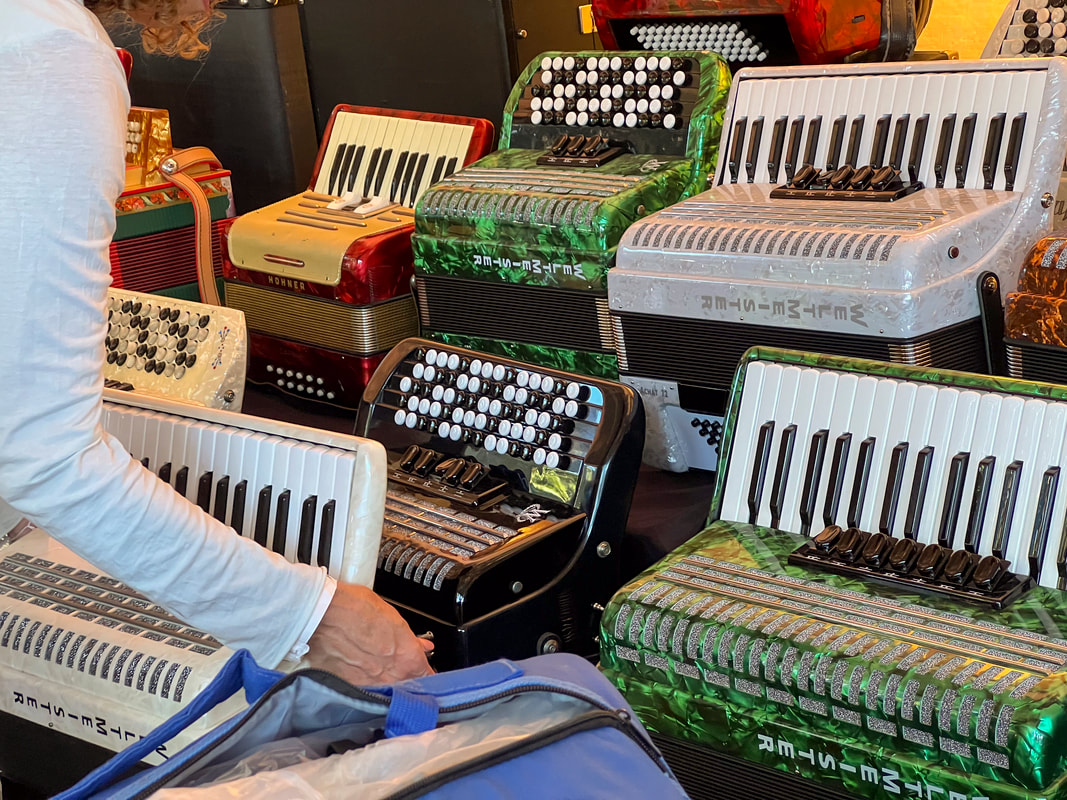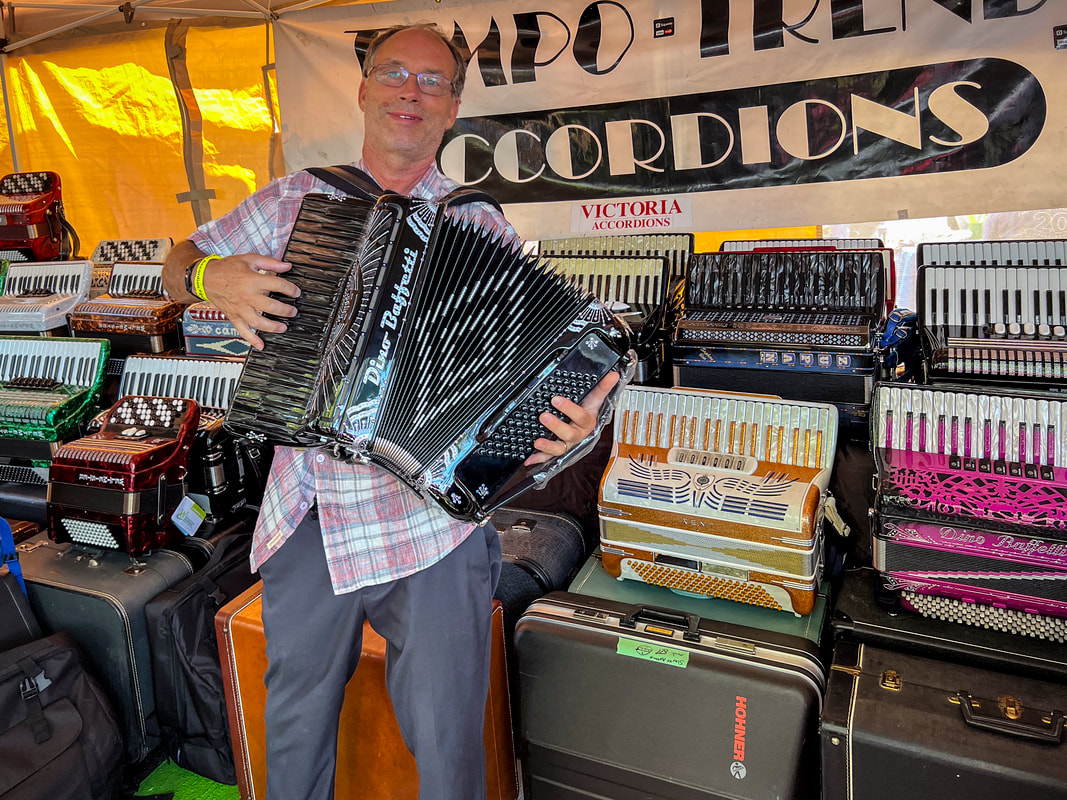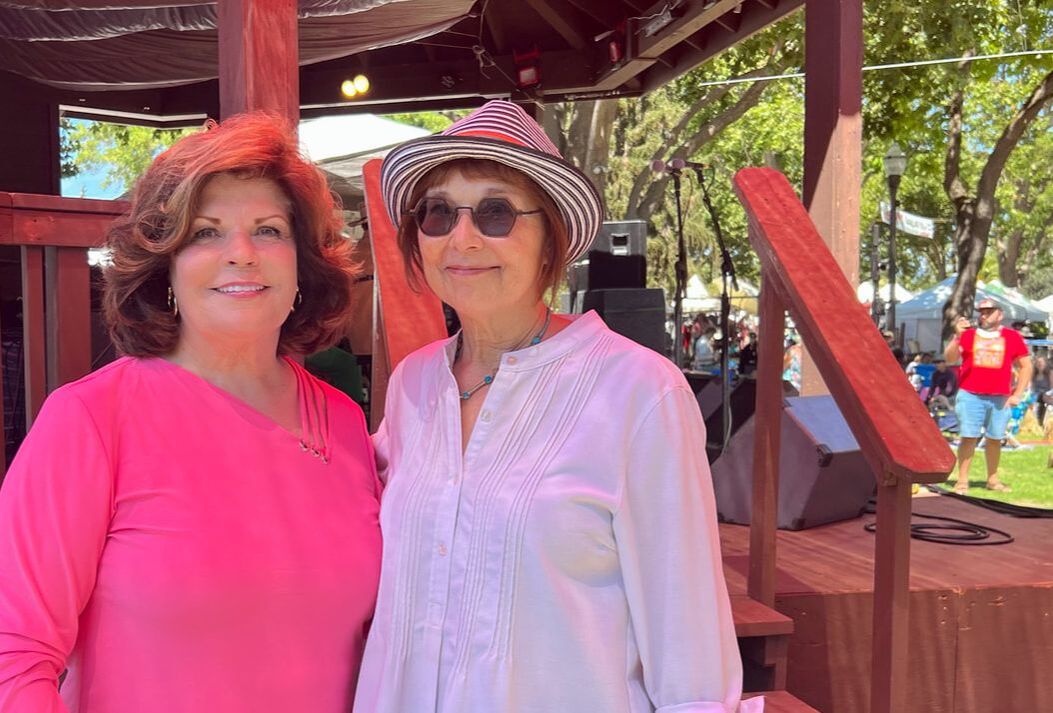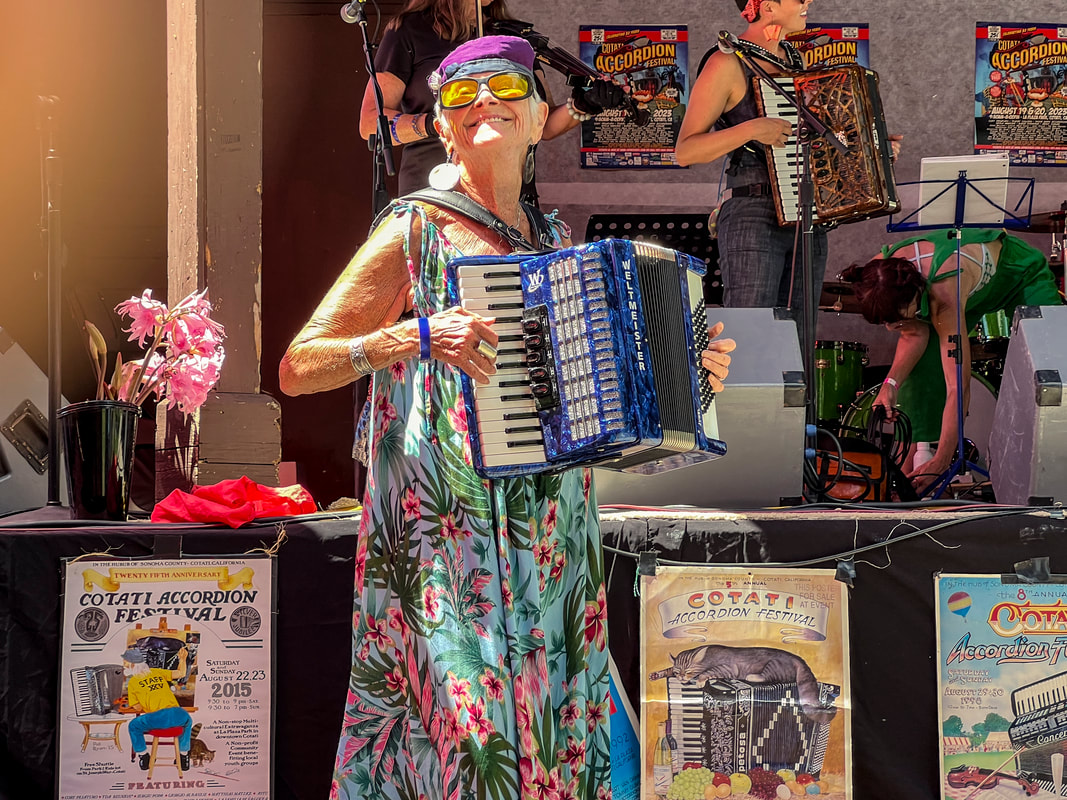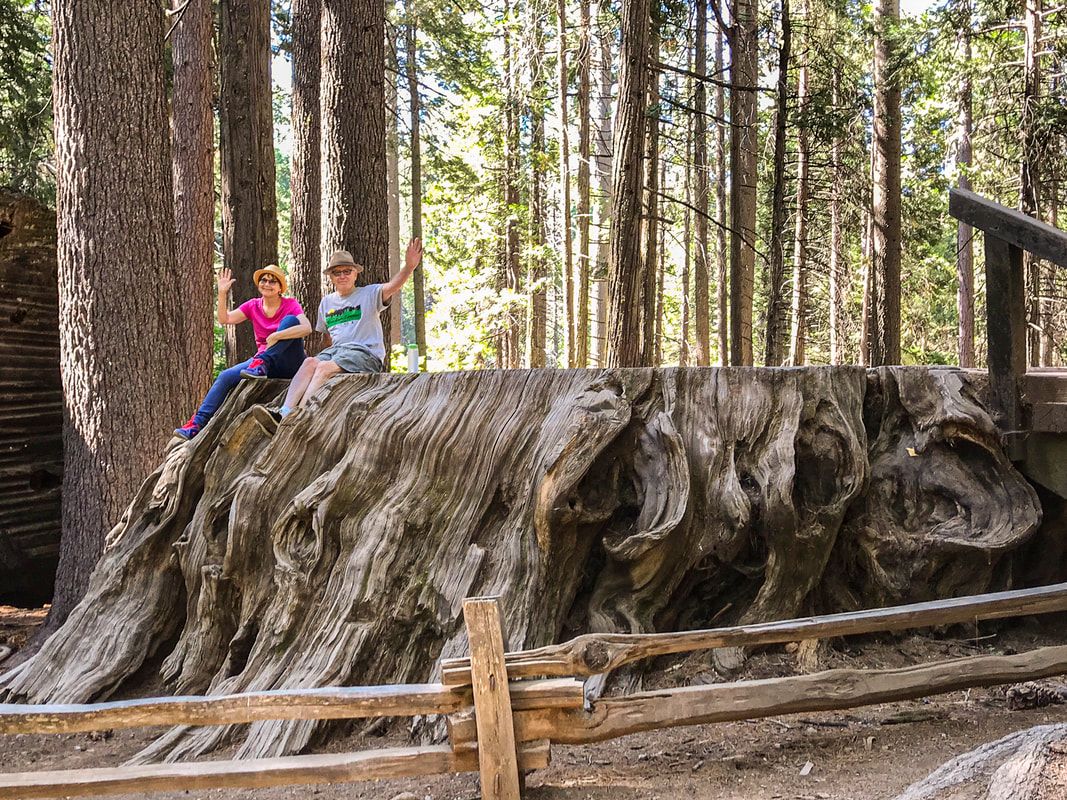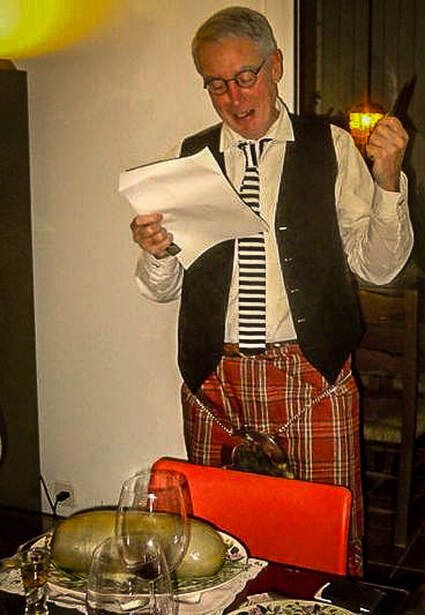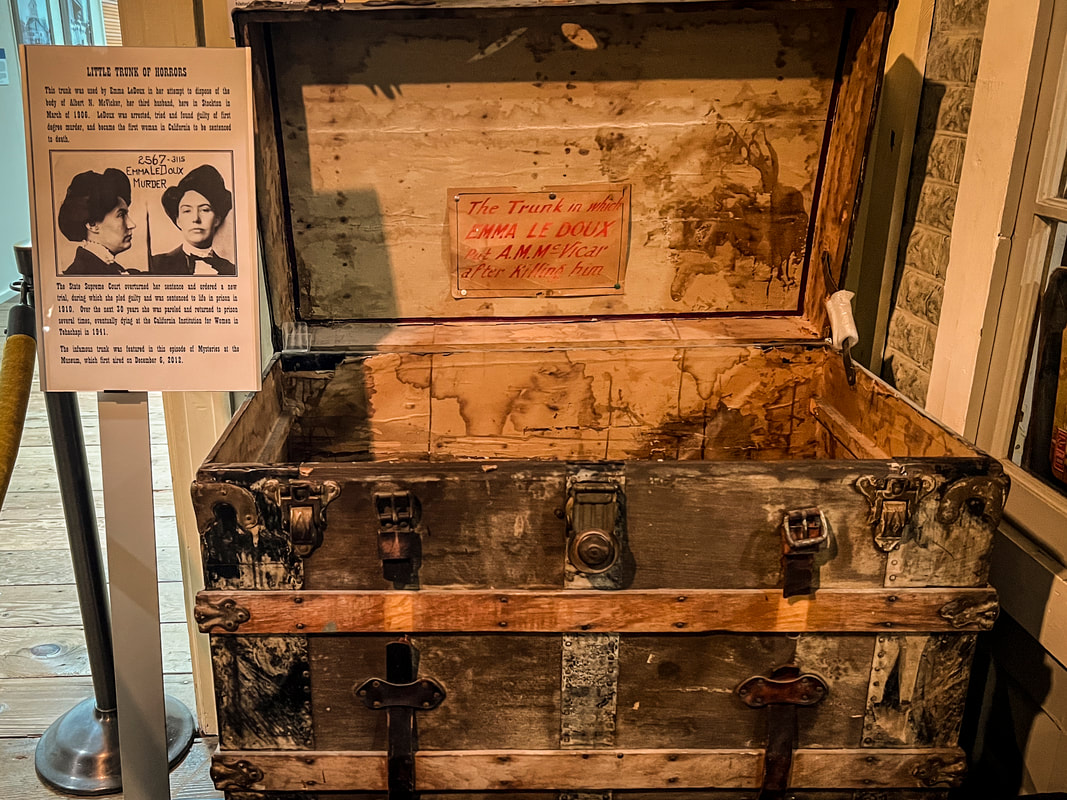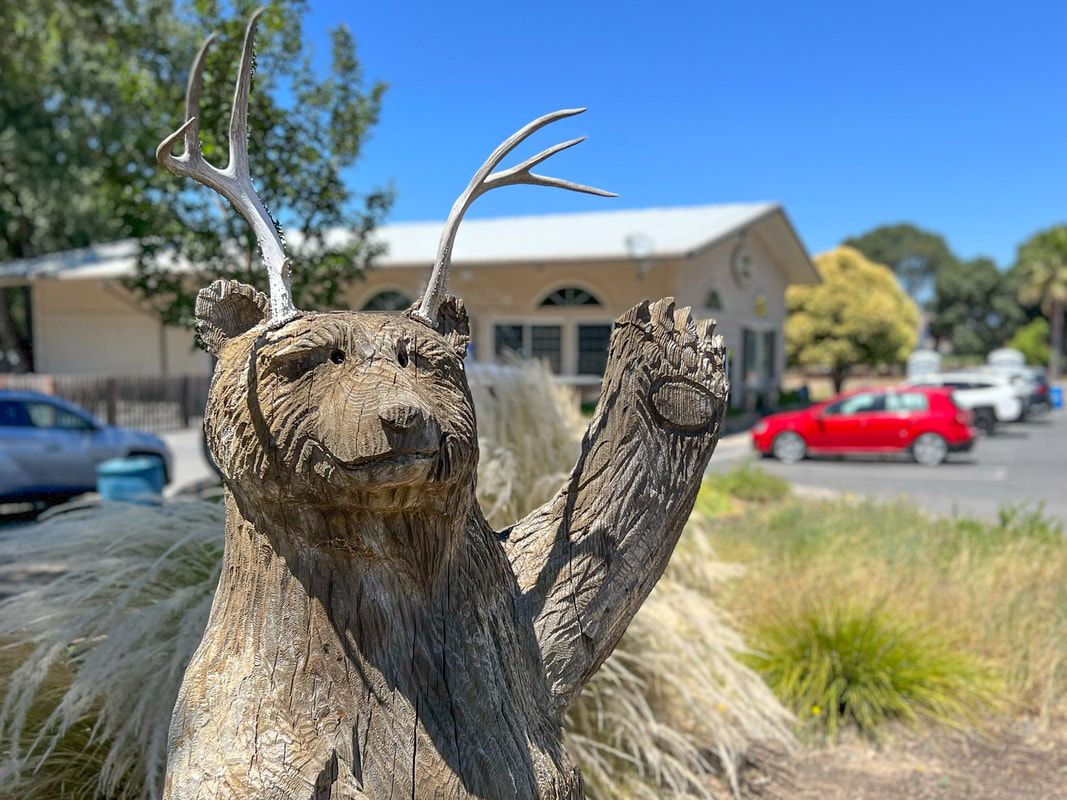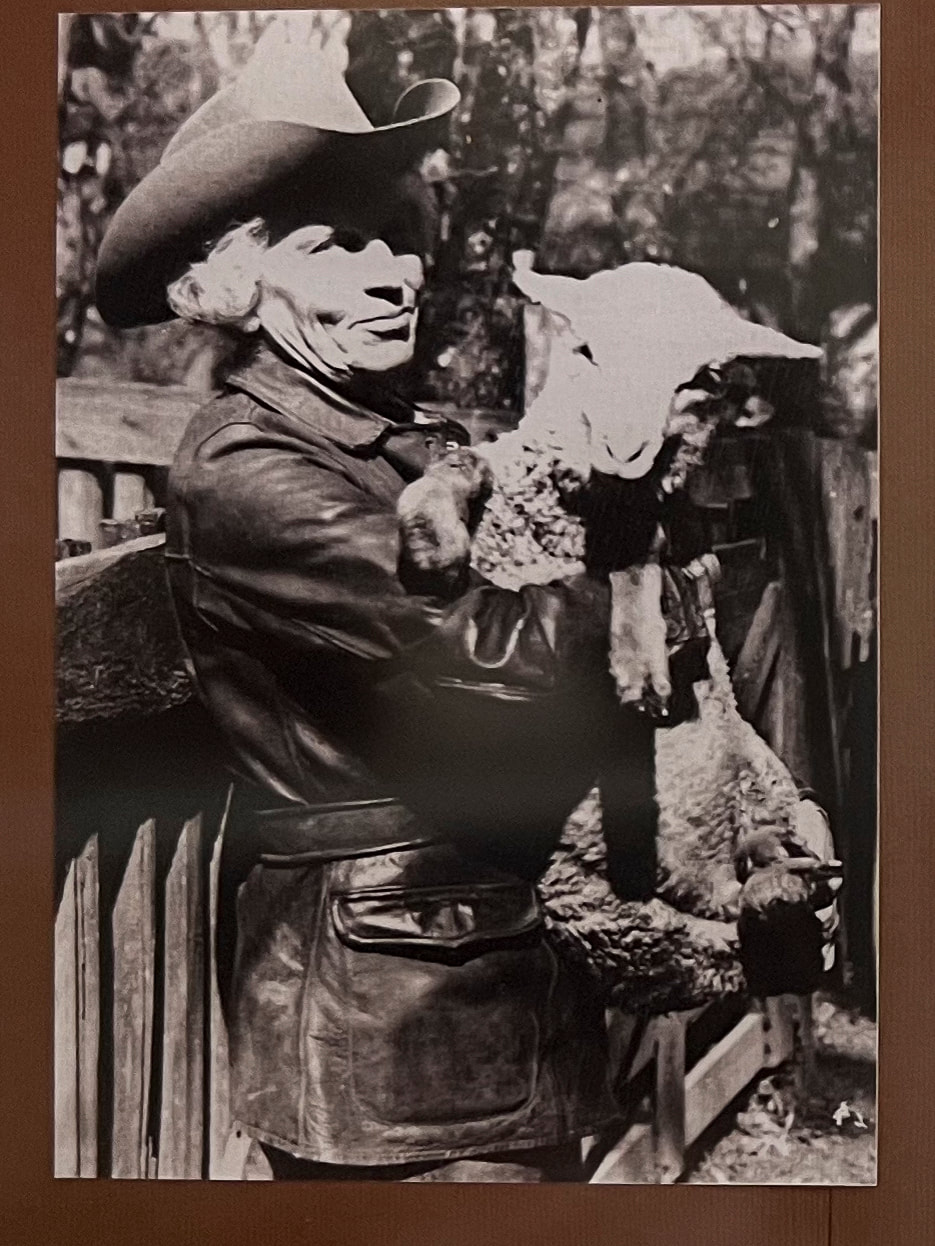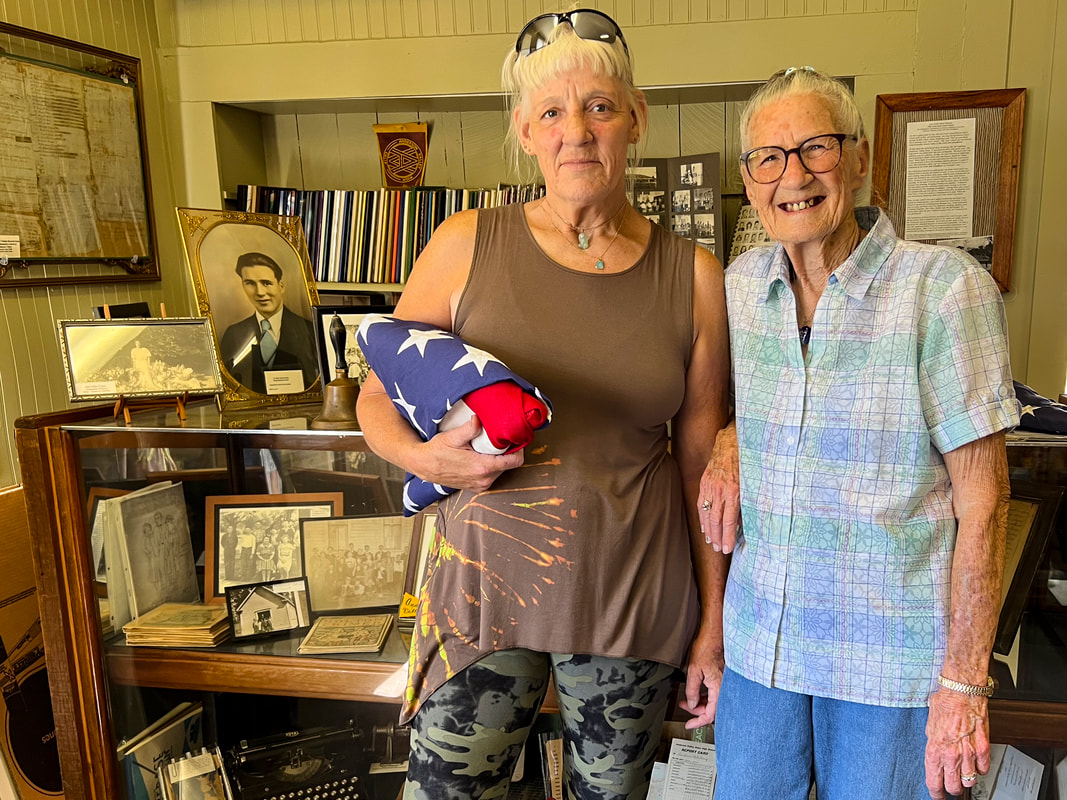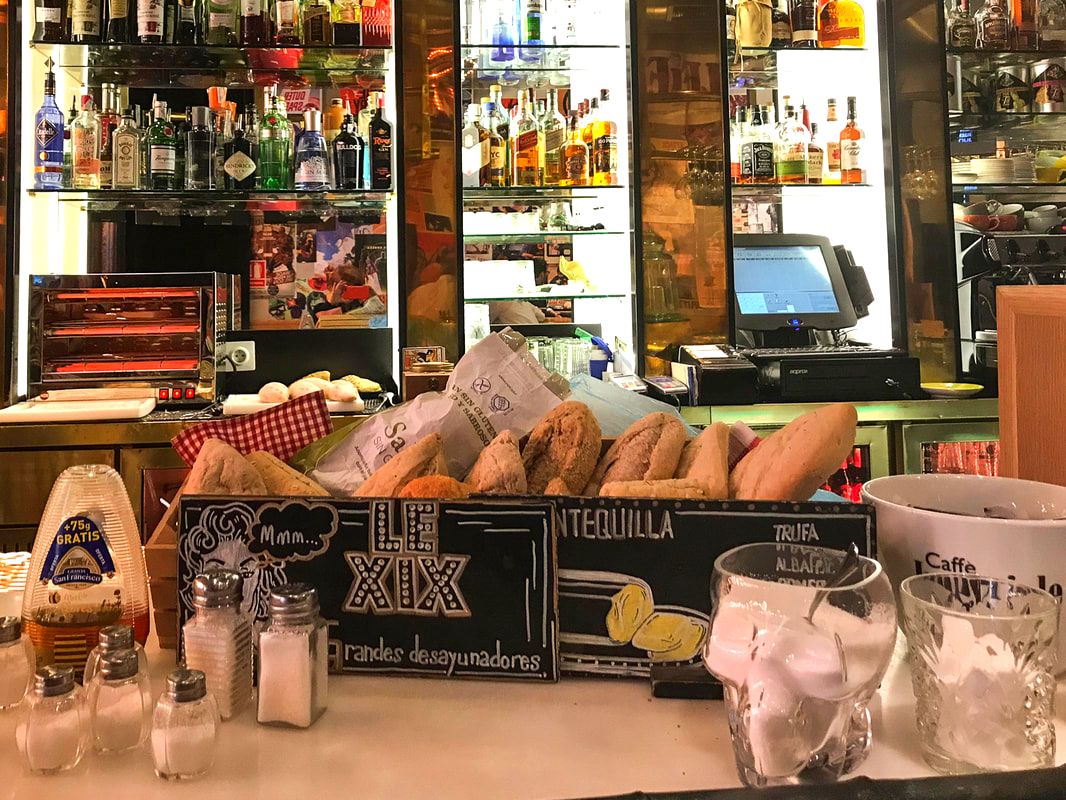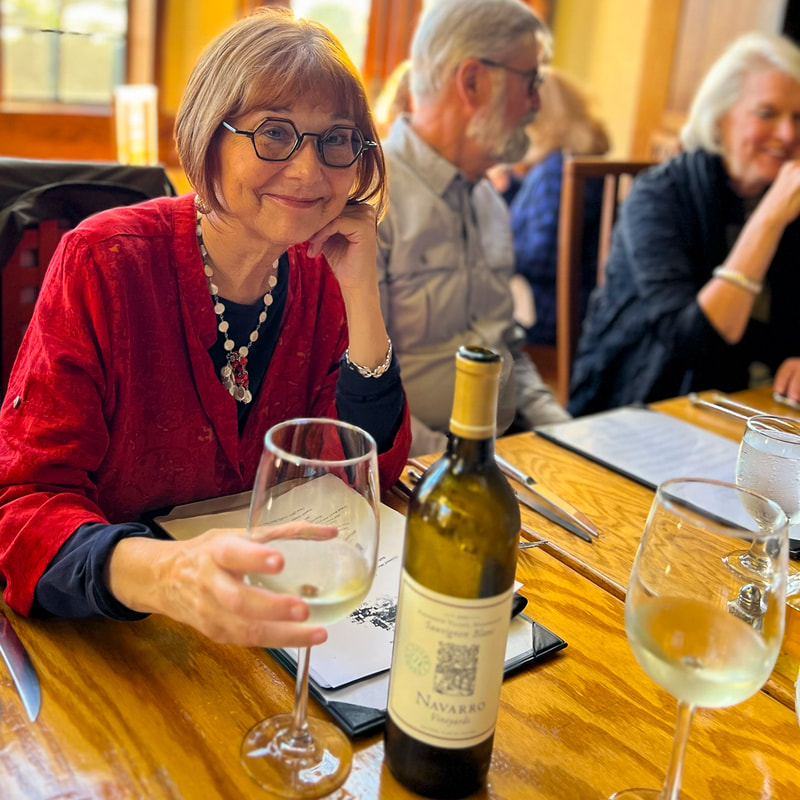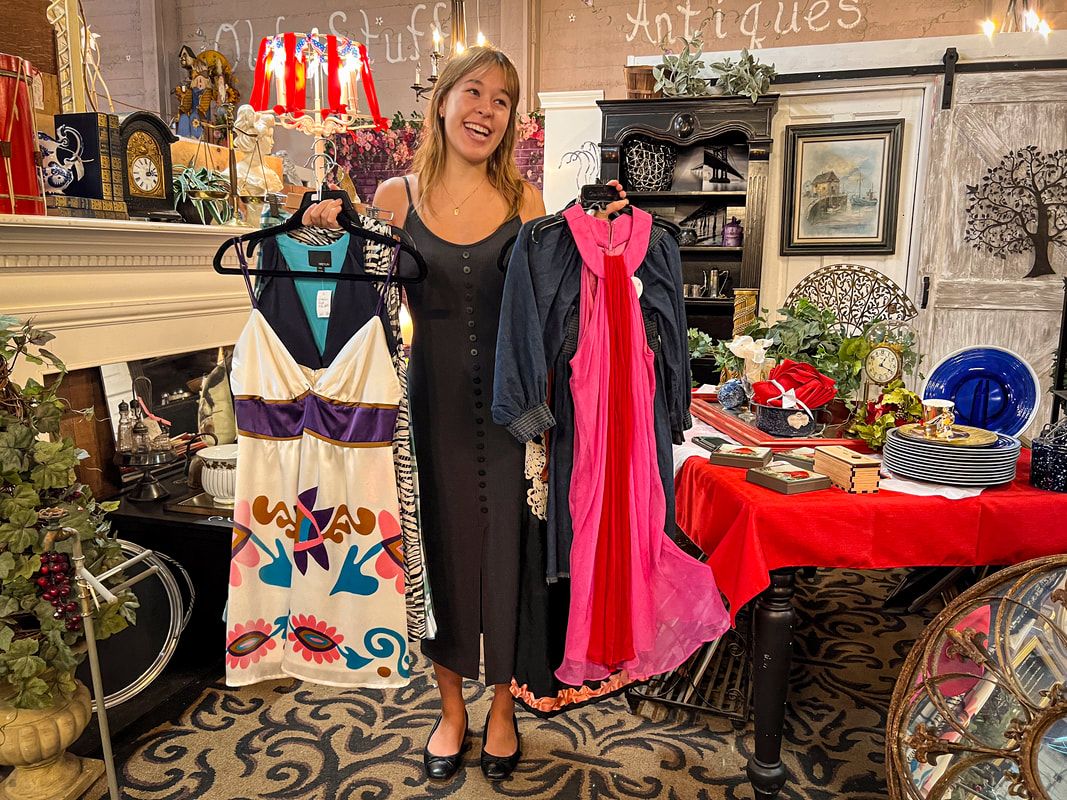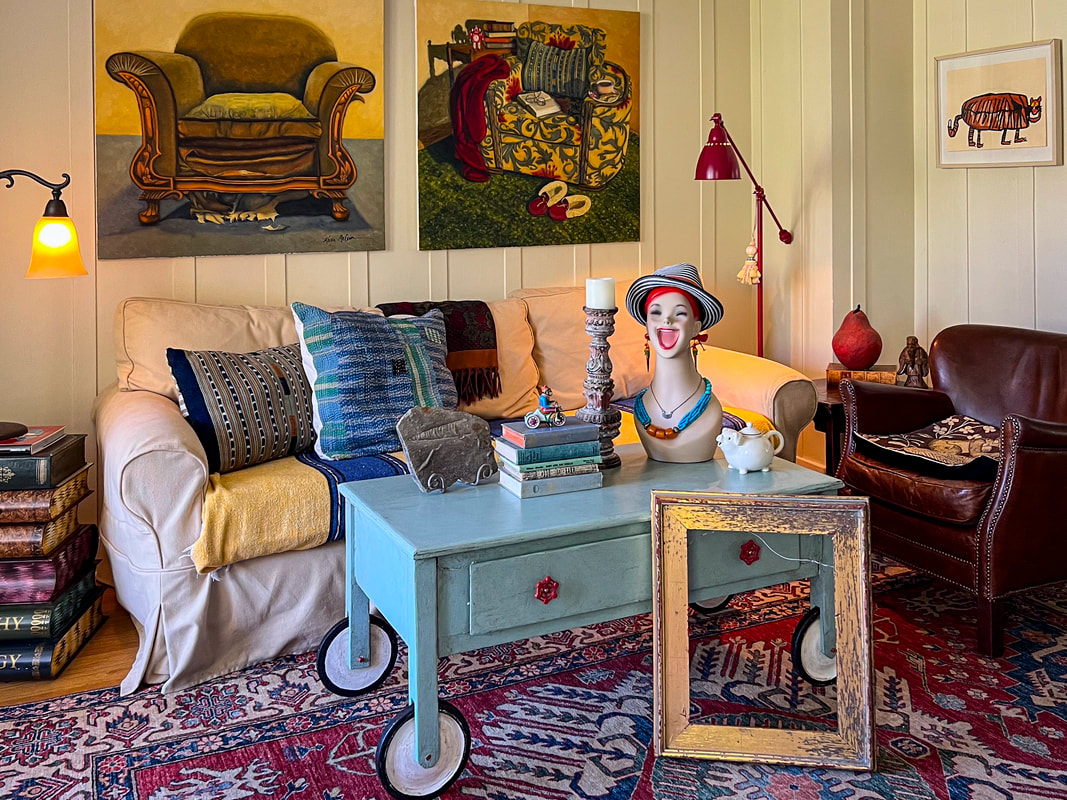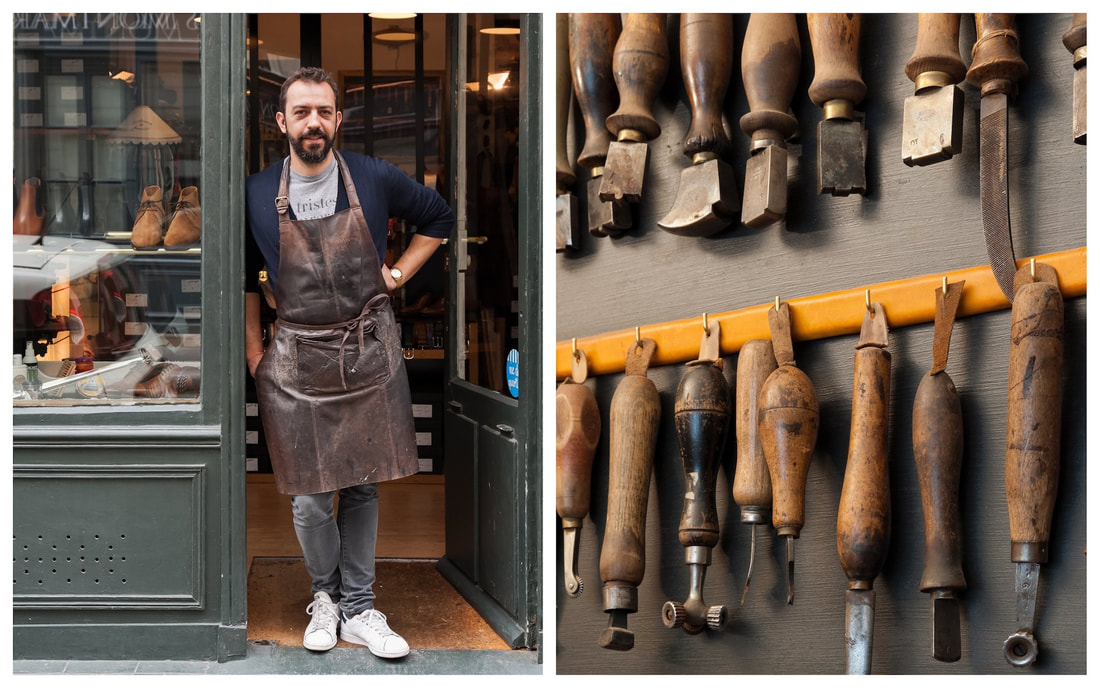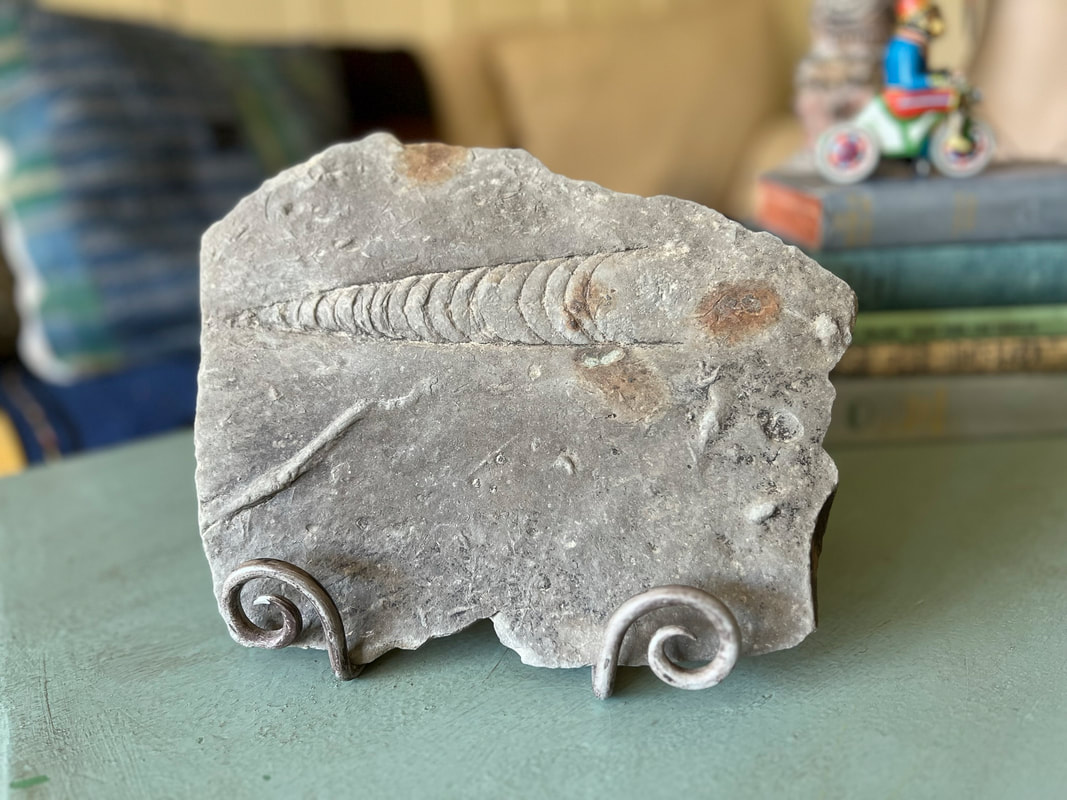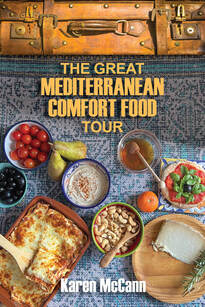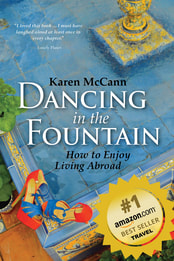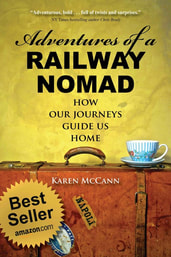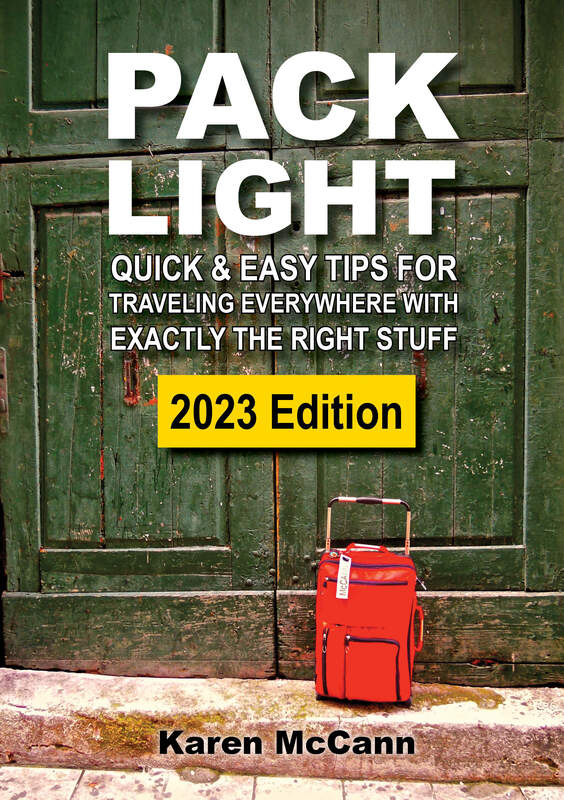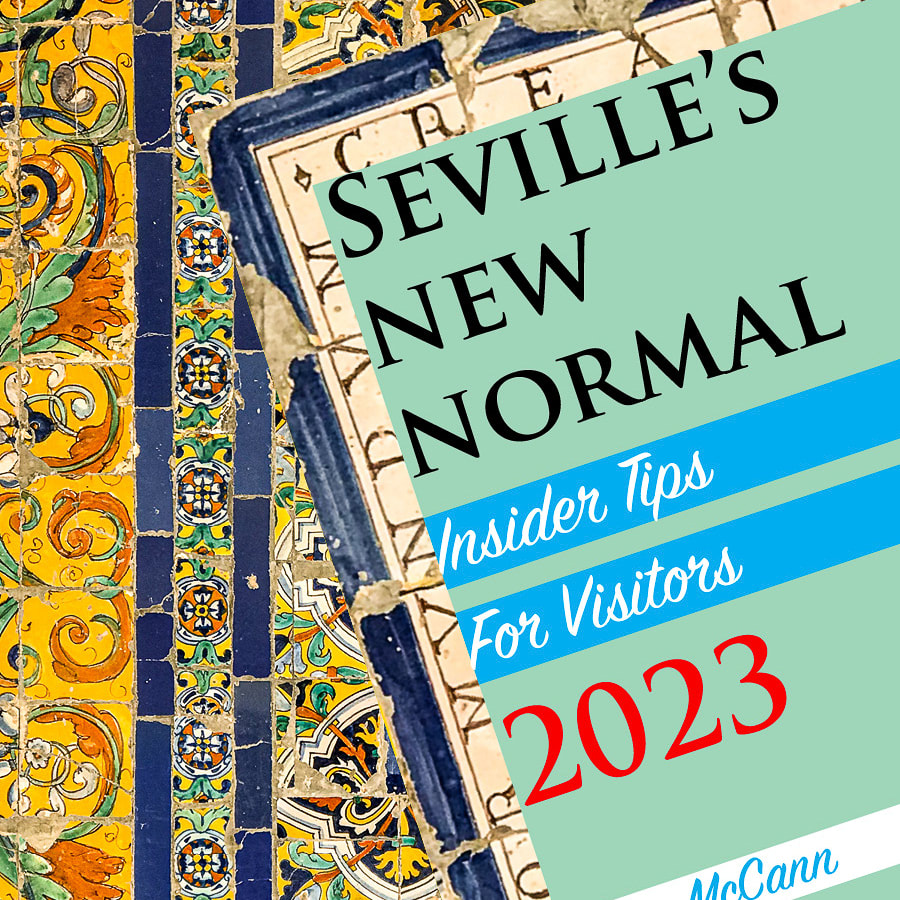|
“Let’s get out of here,” I yelled as the jackhammers started thundering overhead. Again. Rich pantomimed agreement and we shot out the door. We were staying in an otherwise delightful Airbnb in Syracuse, Sicily. It was sheer bad luck the neighbors directly above had chosen that week to smash up their old stone floors and tear out walls. Yes, of course we complained to our landlady, who explained it was nothing to do with her. Crashing masonry, pounding sledgehammers, and buzzing power tools resounded from early morning until late afternoon, occasionally rising to thunderous roars that rattled our light fixtures and made me wonder if they’d brought in elephants to do the heavy lifting. On the upside, we had plenty of motivation to start early and spend all the daylight hours exploring Syracuse. Like most visitors, we began at the city’s southern tip, on the island of Ortygia, where winding streets, ancient stone houses, and quaint tavernas create a sense of seamless storybook charm. But our luck was out in Ortygia too; our first day coincided with the arrival of a massive cruise ship, and the island was overrun with merrymakers. So Rich and I skedaddled north to check out the sprawling archeological site with its Greek and Roman ruins. You can’t tell the story of Syracuse without talking about the ill-fated, ill-considered, astonishingly boneheaded attack launched against it by Athens in 415 BC. By then Syracuse had become the dominant economic and military power in their corner of the Mediterranean, which annoyed the Athenians so much they decided it was time to give Syracuse its comeuppance. Normally the Athenians would have sent a modest force for this kind of job, but infighting among political factions resulted in radical and illogical choices. (Oh, those goofy ancients! How lucky we are not to have that sort of irrational decision-making today!) Athens committed nearly their entire fleet and 30,000 men, then put three ideologically opposed leaders in charge (because that always works out well). Syracuse was stunned by the massive attack, but luckily their ally Sparta sent one of their most kick-ass generals (not that Sparta had any other kind) to sort things out. Eventually he trapped the Athenian fleet in the harbor, enabling Syracuse to sink the invaders’ ships and capture the survivors. Most were sold as slaves, but 7000 prisoners of war were sent to work and live under horrific conditions in Syracuse’s stone quarry. Athens was depleted and demoralized, their enemies were emboldened, and the region’s balance of power shifted forever. Other than that, the plan worked perfectly. On the way to the archaeological site, I noticed an ultramodern building that looked like an upside-down ice cream cone. What fresh nuttiness was this? I soon learned the shape was meant to represent a teardrop, as this was the Basilica of the Madonna delle Lacrime (Our Lady of the Tears), built to house the city’s miraculous weeping statue. It all started in 1953, when a relative gave a modest plaster Virgin to newlyweds Antonina and Angelo Lannuso. Soon the bride became pregnant, and preeclampsia caused her to suffer convulsions and temporary blindness. Late one night she woke up, realized her sight had been restored, and saw Mary’s plaster face weeping. Antonina called in family members, who at first assumed she was hallucinating but then agreed the statue really was crying. (Watch videos of the Madonna weeping here.) As you can imagine, the town went wild. Scientists confirmed the liquid was consistent with the composition of human tears. The pope declared the event “real.” Antonina’s baby was born healthy — on December 25. It was all heady stuff. The statue has long since stopped weeping but is still on display in the ice cream cone — sorry, tear-shaped basilica. People used to catch the statue’s tears in handkerchiefs and treat them as relics, but now they just have priests bless bits of cotton which are tucked into holy cards and sold. Oh yes, I bought one and it’s been in my purse ever since. Not that I believe in asking for miracles, of course, because I am a modern and skeptical woman. But let me just tell you about the rich experiences that have occurred since I started carrying around the blessed cotton. For a start, we left that apartment in Syracuse, returning to Catania. What a relief to my eardrums! I visited Catania’s Museo Storico dello Sbarco in Sicilia 1943 (Museum of the 1943 Sicily Landing), which proved surprisingly interesting and deeply moving. If you paid attention in high school or know the book and/or movie Operation Mincemeat, you’ll appreciate how crucial the Allied invasion of Sicily was to winning the war. It succeeded in large part because the British convinced Hitler the invasion was happening in Greece, an elaborate deception involving a dead tramp dressed as an officer, fake papers, and a lot of nail-biting, cliff-hanging suspense. What I hadn’t really considered properly was how it must have felt to be in Sicily — especially Catania, which was bombed 87 times — during the six-week invasion. The tour gives you a dramatic glimpse of the experience. First you mill around in a model of a Catania square. Suddenly the air raid siren sounds and docents rush you into the bomb shelter. Sitting in near darkness with strangers, you hear planes approaching then bombs exploding, closer and closer. The shelter begins to shake, a little at first, then harder until your teeth are rattling. It’s highly effective and deeply disturbing, especially because I couldn’t stop thinking of all the people in Israel, Gaza, Ukraine, and elsewhere who are experiencing this very same thing right now for real. Catania offers visitors a rich array of experiences, including a vast, sprawling street market in the Piazza Carlo Alberto. One day Rich and I lunched there at a café then picked up supplies including a two-liter bottle of wine for 3 euros or $3.16. (It was a lot more drinkable than you might think.) (Yes, it was!) As we strolled homeward past fishmongers and piles of glistening vegetables, stall owners were packing up for the day, chatting and whistling. A woman with a microphone began singing the lead-in to a song. Wait, I knew this one, it was … “Volare,” she belted out. “Oh, oh…” And then, to my astonishment, the entire marketplace joined in. The young guy selling swordfish, the old lady buying tomatoes, the people sitting over lunch in the café, the delivery guys pushing carts — everyone suddenly burst into song, laughing and grinning at each other in sheer delight. Yes, of course Rich and I joined in. It was magical. Afterwards Rich kept muttering, “I can’t get that song out of my head.” “Don’t fight it,” I said. “We’ve gone nearly forty years without something we considered ‘our song.’ I think this is may be it. OK, I agree, 'Volare' is kind of an earworm and could get annoying. But look at it this way: at least it’s better than listening to the jackhammers in that Syracuse apartment.” “Amen to that.” AND THAT, MY FRIENDS, MARKS THE FINAL CHAPTER OF NUTTERS' TOUR OF SICILY 2023. YEP, WE'RE HEADING BACK TO SPAIN TOMORROW. Thanks for joining me on this long, zany journey. It’s been a hell of a ride. I won't post for a week or two while I catch my breath and settle back into my life in Seville. But don't worry, there are lots more looney adventures, travel tips, and mouthwatering culinary experiences coming up. I’ll keep you posted! In the meantime, feel free to browse through my previous posts about THE NUTTERS' WORLD TOUR WANT TO STAY IN THE LOOP? If you haven't already, take a moment to subscribe so you'll receive notices when I publish my weekly posts. Just send me an email and I'll take it from there. enjoylivingabroad@gmail.com And check out my best selling travel memoirs & guide books here. PLANNING A TRIP? Enter any destination or topic, such as packing light or road food, in the search box below. If I've written about it, you'll find it.
15 Comments
“Rich, I’m in trouble,” I said a few mornings ago. “So far our stay here in Catania has been delightful, but I can’t think of a single moment that counts as a Nutter experience. What am I going to write about this week? If I just prattle on about good food and pleasant weather, even I will fall asleep, let alone my readers.” “Well, there was the drive-by soaking,” he suggested. The day before, a prankish young teen on a motorbike, who happened to have an open water bottle in his hand, decided to douse us as he roared past. The little scamp. “Actually, considering how hot the day was, I found it kind of refreshing.” “Hey, I know,” I said. “I can talk about the vomitorium!” Like most kids, I grew up hearing gross jokes about such chambers, said to be popular among ancient Romans seeking relief from extreme overindulgence. I certainly never expected to visit one. But on my first morning in Catania, on Sicily’s southeast coast, I was touring the ruins of the Greek-Roman theater when I saw a faded sign. “Wait, what?” I exclaimed. “We’re standing in an actual vomitorium?” Yes, and it wasn’t at all what you’re thinking. Turns out the term actually refers to the series of passages designed to let crowds disperse quickly from an amphitheater or stadium after a show — literally “to spew forth.” The idea that it meant rooms used for regurgitation? A total myth. I know, shocker of the year. We’ve all walked through countless vomitoria and never even knew it. Clearly Catania was going to prove educational in unexpected ways. For instance, you can’t spend any time here without learning how precarious it feels to live in a city built on the lower slope of an active volcano. For 500,000 years Mt. Etna has loomed over the landscape, belching smoke, just waiting its chance to explode again. As recently as 2021 there was an eruption lasting six months that disgorged so much lava the volcano grew 100 feet in height. Yikes! It's easy to picture these thing happening in the ancient world, but lately we’ve all been reading such alarming headlines as “Italy plans for mass evacuation as quakes continue around supervolcano; Campi Flegrei area near Naples has been jolted by more than 1,100 earthquakes in a month.” Still, whatever catastrophe may lie ahead for Naples, it’s likely to pale in comparison to what happened to Catania back in 1669. Over several earth-shaking months in 1669, erupting lava from Mt. Etna covered 15 square miles, wiping out whole villages, destroying farmland, eventually pouring into the city’s western edge and flowing up to the very walls of the Castello Ursino (Bear Castle). I imagined what it must have been like for the residents standing on the parapets looking down at the vast river of molten rock advancing toward them, filling the moat, and surging against the building’s foundations. When that kind of disaster happens, who you gonna call? No question it’s St. Agatha, the virgin martyr and patron saint of Catania. She was a tough cookie who knew all about standing her ground under extreme pressure. At age 15 Agatha decided to devote her life and virginity to Christianity, rejecting the amorous advances of the Roman governor Quintianus. Enraged, he had her tortured and (here’s the gruesome part; better send the kids out of the room) had her breasts torn off. She was sentenced to be burned at the stake, but an earthquake disrupted the proceedings, and she died in prison in 251. A year later she was credited with stopping an eruption of Mt. Etna, earning the city’s eternal devotion. Today she is invoked against volcanic activity, earthquake, fire, and breast cancer, and is the patron saint of bakers. This last might seem a stretch until you learn about the pastries called minnuzzi di sant'Àjita. “It means Saint Agatha’s tits,” a Sicilian told me. I quickly stepped back to avoid the bolt of lightning that might be expected to greet these profane worlds, but evidently God was busy elsewhere and didn’t notice. Minnuzzi are made of sponge cake soaked in liqueur, stuffed with ricotta, chocolate drops, and candied fruit, then topped with pistachio marzipan and a candied cherry. I never got around to trying them, but they certainly sound heavenly. St. Agatha isn’t the only one providing Catania with miraculous protection. In front of her cathedral there’s a primitive elephant carved of lava rock; whenever Mt. Etna's ready to blow, it's said to wake up and alert the residents. As you can imagine, I take a good hard look at it every time I cross the plaza, but so far I've never seen it stir. Earlier in its career, during the eighth century, the elephant supposedly came fully alive, carrying the sorcerer Heliodorus on its back as far as Constantinople. At the time Heliodorus was in hot competition for the job of Catania's bishop and took up the Dark Arts to outshine his pious rival, Leo (later St. Leo the Wonderworker). Heliodorus made himself hugely popular by performing magic for the townspeople. This infuriated Leo, who eventually secured the bishop’s job and promptly had Heliodorus burned alive in the nearby thermal baths. Now is that any way for a saint to behave? I ask you. By popular demand, the sorcerer’s magic elephant remained in the city and was eventually placed in front of St. Agatha's cathedral. Major renovations were made in the 18th century, adding fancy carvings, an obelisk, and a fountain. Legend says the men of the town demanded another addition; they complained the statue's gender neutrality was an insult to their virility, so the sculptor gave the elephant a robustly masculine anatomy. Now, those of you who paid attention in zoology class may be thinking, “An elephant — in Sicily? They only live in Asia and Africa, right?” Not in prehistoric times! Apparently back then Sicily was home to miniature elephants about the size of a Shetland pony. Their skulls, which without the tusks look like oversized human heads, have a large hole — a nasal cavity — in the forehead, giving rise to the legend of the cyclops, one-eyed giants living on the slopes of Mt. Etna. “I guess there have been some nutty things going on around here,” I admitted, when Rich and I had reviewed all we’d learned in Catania. But thinking back over my time in the city, the thing that struck me most vividly was the energetic, buoyant spirit of the people. Everyone seemed to have a bit of extra zip in their step, a little more sparkle in their eye. Maybe this is what comes of living on the flanks of a live volcano, I mused. At the end of every day, I suspect people breathe a sigh of relief and give each other high fives, rejoicing that they'd survived another day without being engulfed by molten lava. Or shaken by earthquakes. Or torn asunder by a lascivious politician. Or trapped by a cyclops. I like this attitude and have decided to adopt it. “Made it alive through another day,” I remark to Rich every evening as I pour us each a glass of vino. “Let’s celebrate that little miracle.” JUST JOINING US? THE NUTTERS' WORLD TOUR SO FAR RIGHT NOW: SICILY Enna: Sicily's Belly Button and Home of the Cereal Goddess Agrigento: "The Devil Made Me Write It!" Palermo: The Good, the Bad & the Nutty SUMMER 2023: CALIFORNIA SPRING 2023: SPAIN WANT TO STAY IN THE LOOP? Subscribe to receive notices when I publish my weekly posts. Just send me an email and I'll take it from there. enjoylivingabroad@gmail.com And check out my best selling travel memoirs & guide books here. PLANNING A TRIP? Enter any destination or topic, such as packing light or road food, in the search box below. If I've written about it, you'll find it. You have to love the impish sense of humor that prompts a train station to fill its waiting room with sturdy wooden benches then labels them, “NON SEDERTI QUI (PLEASE DON’T SIT HERE).” As if any further taunting were needed, this train station — and, coincidentally Rich and I — stood at the base of a mountain that was 3054 feet high and famously difficult to ascend. Naturally the area was utterly devoid of taxis or buses. I could almost feel the mountain chuckling deep in its interior. Its sheer cliffs had defeated countless would-be invaders from the 14th century BC until the invention of artillery and aerial warfare. Had Rich and I met our match? “I am not walking up the mountain,” I mentioned to Rich casually but emphatically, recalling last week’s adventure involving a grueling hike that ended with shimmying through a chain link fence. “Don’t worry. We’ll find a ride,” he said, fiddling with his phone, which inexplicably refused to function. Eventually we joined forces with the two other stranded passengers milling about the station. A cab was summoned, and we drove up to Enna, the highest and most central point of Sicily, affectionately known as its umbelico (belly button). Speaking of bellies, mine was growling to remind me I’d given it nothing but a cookie for lunch on the train. Sadly my hopes of immediate food acquisition were quickly dashed. “Here we eat at eight o’clock, not before, never before,” said my hostess at the cozy B&B in the center of town. I groaned inwardly. It wasn’t even 5 pm yet. “Here are the best restaurants.” She gestured towards business cards in neat stacks on a table. I grabbed a handful, and Rich and I went out to explore the town. We strolled about, enjoying the impressive baroque buildings, the charming old stone houses, the cobbled streets, and the general atmosphere of tidiness and friendliness. Wandering into the Church of St. Claire, I found a sign demanding SILENCE and a docent who spent the next twenty minutes chattering nonstop in Italian. I managed to grasp that this was a shrine to those who died in WWII as a result of bombing by the Allies. Our guys. It was a rather lowering feeling, and I had to resist the impulse to apologize. Emerging into the twilight, Rich and I happened upon one of our hostess’s recommended restaurants, but it was a pizza place so we continued on in search of heartier fare. We hit another of the recommended places. Pizza again. We passed another and another, all pizza parlors. Eventually we found a charming, old-fashioned trattoria with dim lighting and white table cloths. I opened the menu. “Nothing but pizza?!?” I exclaimed. “Where are we — in the Twilight Zone?” An English-speaking waiter took pity and directed me to an eatery offering fish, meat, even (gasp!) vegetables, so in the end we dined well. The next morning at breakfast our hostess told me there was a food festival in the main square. I made a beeline for it. “Are you kidding me?” I exclaimed on arrival. “A pizza competition? Really?” Local chefs were busy pulling pies out of ovens, judges were nibbling, frowning importantly, and pronouncing opinions, and members of the crowd, presumably cronies and bigwigs, were happily receiving the leftover slices. Somehow Rich managed to sneak a hand in and snag one. It was the best pizza I’d ever tasted. The slim, delicate crust was lightly brushed with olive oil and hint of local cheese topped with a sliver of prosciutto and fresh herbs. “Maybe this town is onto something,” I said. I don’t need to tell you pizza is popular. Americans are the world champions, consuming a hefty 28.6 pounds per person per year, with the average Italian downing 17 pounds, about twice as much as other Europeans. By my calculation, Enna’s residents consume their own body weight in pizza every month. I wondered why it was so extraordinarily popular here. Was it a natural outgrowth of Sicily’s long association with Naples, which created modern pizza in the 18th century? Or did the roots go back much, much further? By 400 BC, Enna was the site of the most important sanctuary of the fertility goddess Ceres, who gave us agriculture (and hey, thanks for that, ma’am!) as well as the word “cereal.” Later generations came to know her as Demeter, mother of Persephone, who was abducted by Pluto. No, not Mickey Mouse’s dog, I mean the god of the underworld, aka Hades. Ceres’ ancient temple no longer exists, but her story lives on in Enna’s Museum of Myth, the first entirely multi-media museum in Italy. According to legend, Persephone was carried off from Enna itself, or possibly from the shore of nearby Lake Pergusa. Enraged, Ceres went searching for her daughter in a chariot drawn by snakes. Inexplicably, this detail was left out of the museum’s presentation (possibly due to truth issues). Without Ceres around to oversee the earth’s fertility, the land was devastated; onscreen, the images shifted from waving wheat to scorched earth, interspersed with scenes of hell, which apparently looks like this. Humans begged other gods for help, and eventually Pluto/Hades was persuaded to let Persephone return to the earth’s surface. But he craftily got her to eat six pomegranate seeds to fortify herself for the journey, condemning her to spend six months a year with him. And that’s why we have the seasons. I think it all made a bit more sense a few thousand years ago. My point is that Ceres was pretty hot stuff around Enna for a long time, which suggests one possible explanation for the obsession with grain-based foods. Or maybe it’s just that the residents know a good thing when they taste it. The Museum of Myth, the Rock of Ceres, and the city’s castle occupy the highest, most impregnable part of the mountain. Looking out from the castle tower, you can understand how the original Sicani held it for 1000 years. When attacked, all you’d have to do is stand at the edge and drop rocks; when technology improved, you’d shoot arrows or pour a little boiling oil. Frankly, I don’t know how any invader even got that far. I would imagine that the few soldiers who didn’t die of cardiac arrest or pass out from the heat on the way up sensibly opted to slip away among the trees to wait quietly for events sort themselves out rather than do any serious storming. Throughout its long history, Enna was usually lost through treachery rather than battle. The first to take the castle by force were the Romans, who snuck in through the sewers. You can imagine the pep talk. “Guys, we’re going in at night. It’ll be cooler and no one will see us, so none of those pesky arrows or boiling oil. On the downside…” Enna may not be the easiest place to get to, but it’s worth the effort. If only so you can brag about visiting Sicily’s belly button — and of course, eat some of their legendary pizza. JUST JOINING US? THE NUTTERS' WORLD TOUR SO FAR RIGHT NOW: SICILY Agrigento: "The Devil Made Me Write It!" Palermo: The Good, the Bad & the Nutty SUMMER 2023: CALIFORNIA SPRING 2023: SPAIN WANT TO STAY IN THE LOOP? Subscribe to receive notices when I publish my weekly posts. Just send me an email and I'll take it from there. enjoylivingabroad@gmail.com And check out my best selling travel memoirs & guide books here. PLANNING A TRIP? Enter any destination or topic, such as packing light or road food, in the search box below. If I've written about it, you'll find it. Was the letter in the photo above actually composed by Satan? It was discovered in 1676, clutched in the hand of Sister Maria Crocifissa della Concezione (Sister Mary Crucified of the Conception), as she lay collapsed on the floor of her Sicilian convent, covered in ink and gibbering incoherently. As anyone would be, after spending the night fending off the Devil’s advances. When she could talk, Sister Maria Crocifissa said Beelzebub forced her to write the letter, composed of strange characters and symbols, in an unsuccessful attempt to persuade her to abandon her faith and follow him. Naysaying cynics suggest Sister Maria Crocifissa might have been schizophrenic. But the Church took her seriously, launching a 100-year study of the incident that ended in nominating her for sainthood. Her body remains in the convent chapel, an object of veneration, but the letter is kept in the cathedral of Agrigento, where Rich and I are now. Yes, of course I made a beeline to see it. Sadly, the original is stored in the archives, so I could only view the copy. But still! Scholars struggled for centuries to decipher the bizarre document, but it remained a mystery until 2017. That's when Sicilian scientists announced they’d translated the letter using a military codebreaking algorithm they found on the Dark Web (so obviously totally legit and reliable). They said the letter was composed of scrambled Latin, ancient Greek, Arabic, and Runic alphabets, all languages the nun knew from her work as a linguist. The text attacked Christianity, saying God was invented by man. It described God, Jesus, and the Holy Spirit as “dead weights” and said, “This system works for no one.” Sister Maria Crocifissa rejected the message and the messenger, causing Satan to depart howling with frustration. And although I am rarely one to have sympathy for the Devil, I must confess I have frequently felt very similar sentiments here in Agrigento. This ancient, once-powerful town on Sicily’s southern coast looks charming and has great stuff to see and do, but it is mind-bogglingly difficult to navigate. There’s practically no dependable information available on anything, starting with the location of tourist information offices, which appear on maps but nowhere else. Supermarkets have proven equally elusive. Our first afternoon in town, GPS led us out of the old center into increasingly dubious and deserted neighborhoods. As the sky began to darken, we were surrounded by scattered garbage and feral cats and decided we didn’t need provisions that badly. Later, I learned all the supermarkets and greengrocers had fled to the suburbs. In the center, a few tiny mini-marts are the only option. How I miss Palermo’s farmers markets! What’s truly staggering is how difficult it is to visit Agrigento’s main claim to fame: The Valley of the Temples. This is the largest archeological park in Europe, visited by somewhere around a million people a year (nobody has verifiable numbers, of course). The centerpiece, the Temple of Concordia, is one of the best-preserved ancient Greek temples on the planet; it impressed UNESCO so much they based their logo it. The Valley of Temples is considered a must-see for anyone visiting Sicily. But they sure don’t make it easy to get there. The site is just two miles from the city, and yes, there is a shuttle, but the bus stop is so shabby and poorly marked we kept bypassing it during our search. When we finally realized we were looking right at it, we discovered there was no schedule posted at the bus stop — or online either. Foreign visitors milled aimlessly about in the stunning heat, frowning at their phones in bewilderment. When the bus finally arrived and we were on our way, I said to Rich, “What is it about withholding information in this town? Some form of omerta? If we tell you, we’ll have to kill you?” The Valley of the Temples was truly spectacular. Of course, it isn’t really a valley but a ridge; the Greeks loved to place their temples high on windy outcroppings. Why? “Think about the air passing through these columns. Think of it like a wind instrument,” says architect and travel writer Sarah Murdoch. “As the air passes through these columns, it would produce vibrations that you can’t hear. But the Greeks had the idea that the vibration, once it passed over the Greek city, would create a sense of peace and harmony amongst the people.” Wow, can we bring that architectural concept back now? After tramping across the site for hours under the sweltering sun, Rich and I weren’t thrilled by the prospect of the long walk back to the entrance followed by a wait of indeterminate length for the shuttle to the archeological museum. Consulting his GPS Rich announced, “I can get us there another way. There’s a path.” “Is this going to be like the hunt for the supermarket?” I asked skeptically. “Of course not.” I could see the path and the archeological museum a mile away. “Won’t there be a fence? I am not climbing a fence.” “Of course not.” “If there is a fence at the end of this long, hot walk, I am sitting down until you return with bolt cutters.” “It won’t come to that.” It very nearly did. We trudged alone through olive groves, the sun breathing down the back of my neck like a dragon. After a small eternity, we found ourselves close to the archaeological museum and — you guessed it — our way was blocked by a high chain-link fence. Eventually we discovered the fence had a small gap, maybe ten inches wide, where others had slipped in and out. “Perfect!” cried Rich enthusiastically. He began wriggling through to find himself standing on top of a six-foot wall. “No problem!” He shinnied down using parts of the adjacent gate for footholds. “Now you!” I can never decide whether squirming through that gap was the best or worst moment of the day. I kept expecting to hear my trousers ripping as I fell to my death, or at least to a broken ankle. When I made it safely to solid ground, I knew I’d feel tremendously euphoric if I ever managed to catch my breath again. I’ll say this for Agrigento: it keeps you on your toes. Even our apartment has its challenges. Airbnb never mentioned this apartment has four different levels joined by smooth marble stairs completely lacking in handrails. I don't dare risk wearing my slippers on them. If I get up in the night, I have to put on my sure-grip sneakers, my eyeglasses, and all the lights, turning what's normally a quick trip into a major production. Yes, here in Agrigento, I am really living on the edge. My life is all about survival now. I can’t buy healthy groceries. The stairs in my apartment are a fatal accident waiting to happen. I'm in a constant state of ignorance and bewilderment. But I am heartened to discover that I can still sneak through a fence without getting caught, something I haven’t undertaken in decades. Who says travel doesn't keep you young? JUST JOINING US? THE NUTTERS' WORLD TOUR SO FAR RIGHT NOW: SICILY Palermo: The Good, the Bad & the Nutty SUMMER 2023: CALIFORNIA SPRING 2023: SPAIN WANT TO STAY IN THE LOOP? Subscribe to receive notices when I publish my weekly posts. Just send me an email and I'll take it from there. enjoylivingabroad@gmail.com And check out my best selling travel memoirs & guide books here. PLANNING A TRIP? Enter any destination or topic, such as packing light or road food, in the search box below. If I've written about it, you'll find it. On our first morning in Palermo, Sicily, Rich bounded out of bed with the unbridled joy of a man who knows he’s having ice cream for breakfast. I’d read about the Sicilian tradition of starting the day with scoops of gelato stuffed into brioche, and as Rich kept pointing out, I owed it to my readers to dig deep into this subject. We found a café and tried to place our order. “Brioche con gelato? Now? Well, yes, you could,” said the proprietor, in the dubious tones of one who acknowledges that yes, you could wear pink to Don Corleone’s funeral, but are you sure you want to? “It’s not for breakfast?” I asked incredulously. How did I get this so wrong? “When is it eaten? Later in the morning?” “Yes. Morning, lunch, afternoon. Any time.” Except, apparently, now. We ordered croissants instead. This was my first hint of just how slippery I’d find Sicily’s culinary traditions. Palermo is famous for its street food, which is sold in carts and hole-in-the-wall eateries all over town, and I soon learned what people really prefer for breakfast is pani ca' meusa (in proper Italian, pane con la milza). To make milza, you boil up cow spleen, lung, and trachea, fry them in pig lard, and tuck them into a bun, possibly sprinkling cheese on top. Everyone assures me this meal will give you the strength to get up and do what needs to be done. Did I try it? Oh, hell, no. There are some things at which even I draw the line. But those raised here love this kind of stuff. Frequently conquered and perpetually impoverished, Sicily has spent centuries getting creative with obscure animal parts. Whenever I see gusts of smoke rising from a grill, I know it’s stigghiola, lamb or goat guts rolled around a skewer or leek and cooked over the flames. Another common sight is a large, cloth-covered basket known as a panaru, inside of which is frittola. Nobody seems to know exactly what ingredients make up frittola, but the prevailing theory is cartilage, lard, and some kind of meat. Street vendors dip their hand under the cloth, extract a greasy blob, drop it onto oiled paper, and pass it over to you. Mmmmm. I’ve had ample opportunity to observe all this as our Airbnb apartment is in the heart of Capo, one of the city’s largest street markets, built a thousand years ago to serve the new Arab overlords. Since then it has been a favorite with everyone from families to princes to pirates and has sustained generations of pickpockets. These days Capo has reinvented itself as “a bustling agri-food trading hub,” catering to tourists as well as locals. There’s constant hubbub. Vendors shout out their wares, delivery boys whistle and sing, bands play, fireworks explode (mostly at night, but on Sunday at 9 am) (nope, no idea why), weddings are celebrated, religious statues are carried through, and astonishing amounts of fresh produce and street food change hands. I love the sprawling, shouting, chaotic vitality, and so did Sicily’s renowned artist Renato Guttuso. He painted another old Palermo street market La Vucciria so vividly that it is now among the most beloved works of art on the island. I was determined to see Guttuso’s painting, now displayed in the 14th century Steri Palace. We went there the first morning, right after our croissants, and I was slightly dismayed to discover viewing the painting could only be done in the context of a gruesome guided tour of an Inquisition prison. The building housing the prison, the painting, and a few other random artifacts started out as home to Palermo’s nobility; 200 years later it was surrendered to the Spanish when they became Sicily’s newest overlords. As this happened during the Inquisition, the palace was soon filled with prisoners who created elaborate graffiti using scrapings from terra cotta floor tiles and their own bodily fluids. (You do not want to know the details.) Eventually everyone in those cells was executed in the palace’s front garden, on the spot now occupied by the Strangler Tree, said to have grown to its enormous proportion thanks to all the blood soaked into the soil. Yes, eventually I saw Guttuso’s painting, which was marvelous, but emerging into the sunlight of late morning, I realized the grisly tour had left me a bit demoralized. Rich said he knew just what I needed to recombobulate: brioche con gelato. Apparently it's typically eaten as a second breakfast. The day proved typical of our time here in Palermo: the delightful, the delicious, and the deeply disturbing all jostling for attention. On the positive side I reconnected with a bookseller I’d met during a brief visit here in 2016. Retired accountant Pietro Tramonte presides over the Biblioteca Privata Itinerante (Private Traveling Library), a warren of 75,000 books in a back alley near the marina. For those who love to read, he says, “the paper material is like cheese on macaroni.” I showed him the photo of us from seven years ago, and he was delighted, posing for more pictures and then taking us out for coffee. Another wonderful experience was lunch with a Palermo couple in their home, arranged through EatWith. Piera and her husband Rino gave us a warm welcome and platters of scrumptious food. Soon all four of us were talking at once, waving our hands around for emphasis, and laughing together like vecchi amici (old friends). Inevitably, talk turned to one of the island’s most famous exports: the mafia. “More dangerous than ever,” said Rino. “They do not affect our days, our lives directly, but they are deep inside industry and government.” I’d heard about the anti-mafia movement, started in 2004, that included local businesses placing a sticker on their window to indicate their refusal to pay “pizzo,” extortion money. So far I have only seen one such sticker, and I can only assume everyone else who posted them now sleeps with the fishes. To be fair, Palermo’s blood-curdling side was evident long before the mafia, as witnessed by the Cappuchin Catecombs. Here we found 8000 dead bodies hanging from the walls, hooks in their backs and a wire around their chest to keep them from toppling forward onto us. Many appeared to be screaming. Frankly, it was all I could do not to scream myself. The oldest were 17th century monks, some wearing heavy ropes of penance around their necks. In the 19th century it became fashionable for prosperous citizens to pay the Capuchins to place deceased relatives in the catacombs. Families would visit, dust the corpse, and replace any clothing that had rotted. They had to keep paying the Capuchins, and if they fell behind, the bodies would be removed and set aside until the account was paid up in full. “Sicily is a Nutters’ paradise,” a friend wrote to me some months ago, and boy, was she right. Palermo is eccentric, rich in history, and quirky in nature. I just love this ancient city. But in a few days, we’re off to another part of the island where, among other things, they claim to have an actual letter written by the Devil himself. More on that next week. JUST JOINING US? THE NUTTERS' WORLD TOUR SO FAR SUMMER 2023: CALIFORNIA SPRING 2023: SPAIN WANT TO STAY IN THE LOOP? Subscribe to receive notices when I publish my weekly posts. Just send me an email and I'll take it from there. enjoylivingabroad@gmail.com And check out my best selling travel memoirs & guide books here. PLANNING A TRIP? Enter any destination or topic, such as packing light or road food, in the search box below. If I've written about it, you'll find it. “It was like being hit over the head with a baseball bat: This is what you’re going to do,” says Alice Mayn. Naturally this staggering epiphany came when she least expected it. “I had retired. I was living in a house that I had remodeled and was going to live in the rest of my life. My young grandchildren were right down the road from me. I was never going to move again. Then Lily comes into my life.” Lily just wanted a little peace and comfort in her old age (don’t we all?). Instead, she was found wandering the streets of Santa Rosa, California with no place to call home. As a golden retriever, Lily couldn’t share details of her backstory, but she had a host of pesky health problems that suggested she’d been alone for a while. She went to a shelter but was still at risk; sadly, senior dogs are often the first casualties of an overburdened system. When Alice fell for Lily’s sweet charm and took her home, no doubt the dog could hardly believe her luck. Lily enjoyed four contented months before succumbing to a fatal blood disorder. But according to Alice, Lily’s work wasn’t finished. “She had an agenda for me.” That agenda — Alice’s new mission in life — was establishing a sanctuary for other hard-to adopt, at-risk, large, senior dogs. Fifteen years later, thanks to generous donors and a team of 75 selfless volunteers, Lily’s Legacy sits on a five-acre ranch with room to run, a canine swimming pool, and a barn where old dogs get a daily cuddle, letting them know they are not forgotten, marginalized, or invisible. They are loved. I was in Seville when I first read about this “Cuddle Club” just before Christmas of 2019. When I realized it was located in Petaluma, just half an hour from our cottage in California, I printed their flier and gave it to Rich, with the words “We are doing this!” scrawled across the top. But before we could act on the plan, the world was upended by the pandemic. It wasn’t until last Sunday — three and a half years later — that we finally made it to Lily’s, sat on those comfy sofas, and scratched some of those sweet old dogs behind the ears. They are all great dogs, carefully vetted to make sure their personalities and temperaments will mesh comfortably with the rest of the pack. There are typically ten to twelve dogs in residence and a few fostered; all are larger animals (50+ pounds) older than 7 years. After some vet care and TLC, around 85% of them get adopted to a “furever” home, and the rest live out their days at Lily’s. Alice’s mission keeps expanding; she launched Saving Senior Dogs Week USA and the Lifetime Care Program that guarantees your dog will have a home at Lily’s after your demise. I know, estate planning for dogs; who knew? I explained to Alice this visit marked the final chapter in this summer’s Nutters’ Tour of California. “I don’t mean to imply you’re a nutter,” I added hastily. “Rich and I are very clear that we’re the nutters, exploring the world in our own eccentric way.” She laughed. “Oh, I’m a nutter all right.” Glancing around her office, filled with dog beds, canine memorabilia, and the large, lovable Uni, she grinned. It was clear she wouldn’t have it any other way. Rich and I are leaving California next week, and my view of life here is already taking on a warm, nostalgic glow. Rich keeps reminding me of all the stuff I won’t miss. The chaos caused by two water main breaks this month, causing flooding and endless repairs on our street. The recent energy blackouts disrupting our lives. The neighborhood firebug who has twice started towering blazes in the middle of the night on a property adjacent to ours. Well, yes, there’s all of that. But most of the time it’s been a great, fun-filled summer. I’ll miss our CA companions — human, furred, and feathered. Every morning Rich and I sit in the garden and have breakfast with the birds. They are messy eaters, and we keep a birdbath underneath the feeder to catch the inevitable spilled sunflower seeds. This spring, the squirrel we call Peanut discovered this treasure trove of easy eats, and for months he’s been gorging himself. In fact, he’s grown so stout I began worrying about his mobility and his cholesterol. When he disappeared for a while, I wondered if he was off having his stomach stapled or visiting a health spa, but he recently returned, hefty as ever, to resume his favorite position. When I told my sister-in-law we were glad he’d come to no harm, she gave me an incredulous look. “You’re feeling nostalgic about Peanut?” she asked. “Squirrels are just rats with better PR.” “I won’t tell him you said that,” I replied. Right now my main preoccupation is packing for the five-week Nutters’ Tour of Sicily we're taking before returning to Seville. Rich has devoted the last month researching ever-smaller suitcases. As a packing minimalist, his preference would be to hop on every plane or train carrying nothing but a toothbrush and a passport. Rich is not the only one with a “less is more” attitude toward luggage these days. To promote more sustainable travel, Japan Airlines is testing a clothing-sharing program called “Any Wear, Anywhere.” You pack the bare necessities and find pre-worn (but clean!) rental clothing waiting at your hotel. European ski resorts are pioneering similar programs. To be honest, I’m having a hard time warming to the idea. Will these rented clothes fit comfortably, let alone express my personality and tastes? Somehow I doubt it. As we’re not heading to Japan or an Alpine ski lodge, we couldn't rent a travel wardrobe even if we wanted to. So two weeks ago we bought trim new four-wheel suitcases, just 22 x 14 x 9 inches. I’m happy to report I’ve done a successful test pack, fitting in everything shown below. (I always get questions about brands and details, so I’ve linked to some new discoveries for those who are interested. As my regular readers know, there are no paid promotions on this blog.) My Minimalist Packing List for Sicily Suitcase: 4.6 pounds, 22 x 14 x 9 inches Featherweight travel vest 2 pairs trousers 2 short-sleeved t-shirts 1 sleeveless t-shirt Button-down no-iron dress shirt Sweater Light rain jacket, detachable hood Yoga pants for PJs and exercise Sundress Socks & underwear Espadrilles Slippers Toiletry kit Kindle Meanwhile, I’m busy researching Sicily. My friends, this is one nutty island. Rich was ecstatic to learn they serve ice cream with brioche for breakfast. I’m fine with the ice cream but a bit worried about the brioche. Turns out the Sicilians say, “If you drop even a single crumb, there is a place reserved in purgatory where you are doomed to pick up breadcrumbs with your eyelashes for hundreds of years.” Yikes! Here’s hoping I don’t find myself in God’s doghouse, collecting crumbs for eternity. “Buckle up,” I told Rich. “It’s going to be a wild ride.” I'll be On the Road, So No Posts for a Week or Two After that, my schedule may be erratic, by I promise to keep you informed of all the oddball things I find Palermo and the rest of Sicily. JUST JOINING US? THE NUTTERS' WORLD TOUR SO FAR SUMMER 2023: THE NUTTERS' TOUR OF CALIFORNIA At Last! We Finally Visit the Cuddle Barn (Senior Dog Rescue) The Accordion Is Hip Again. Yes, It Is! (Cotati) Boonville: A Town So Remote It Has Its Own Language (Anderson Valley) Can't Stop the Madness, But Let's Slow It Down a Bit (Thrift Shops) It's Only a Movie. Or Is It? (Bodega Bay) Why I Spray-Painted My Shoes (Theme Weddings) Please, Please, Please Don't Ask Me to Sing Karaoke (San Anselmo) Keeping It Strange & Wonderful for Future Generations (Fairfax Festival) Why Isn't Anyone Banning My Books? (Alameda) When Pigs Fly (Yes, They Can!) (Sacramento Pig Races) Do You Believe in Magic? (Macabre Market) My Close Encounter with the Skeptic Society (Outer Space) The Nutters' Guide to Modern Comfort Food (My Kitchen) Relationships: Do Humans Stand a Ghost of a Chance? (Hangtown) For Nutters, There's No Place Like California (Petaluma Chicken & Egg Day) Can Artificial Intelligence Help Me Plan the Next Nutters Tour? SPRING 2023: THE NUTTERS' TOUR OF SPAIN Spain Never Runs Out of Offbeat Curiosities (Zaragoza, Barcelona, Tarragona) I Travel Deep into the Heart of Nuttiness (Palencia & Pamplona) Road Warriors: Let the Good Times Roar (Léon & Oviedo) Travel Alert: You Can't Always Get What You Want... (Madrid & Burgos) Gobsmacked at Every Turn but Embracing the Chaos (Jaén & Valdepeñas) All Aboard for the Nutters Tour of Spain (Packing & Organizing) WANT TO STAY IN THE LOOP? Subscribe to receive notices when I publish my weekly posts. Just send me an email and I'll take it from there. enjoylivingabroad@gmail.com And check out my best selling travel memoirs & guide books here. PLANNING A TRIP? Enter any destination or topic, such as packing light or road food, in the search box below. If I've written about it, you'll find it. I once got into a hot dispute with an accordionist, and it didn’t end well. Around the time of our tenth anniversary, Rich and I often went dancing in a small club in Cleveland’s Little Italy, where local bands played ballads made popular by Rat Pack crooners. On a whim, we hired their best band — accordion and all — to play at our anniversary party. A few weeks before the festivities, we dropped in to listen to the band only to discover, to our horror, that the accordion player had made his new girlfriend lead vocalist, and her screechy voice had caused the rest of the band to walk out. We couldn’t inflict the girlfriend’s ghastly voice on our guests, but the accordion player refused to take “You’re fired” seriously, insisting he’d show up and play, refusing to return our hefty deposit. What to do? A Sicilian-American friend said, “What you need is a fifty-dollar man.” “What’s that?” asked Rich. “What instrument does he play?” “The accordion.” “Well, he’s going to have a hard time playing the accordion with ten broken fingers.” Yikes! “For five dollars,” asked Rich, “will he just break the keys of the accordion?” Not to keep you in suspense, we didn’t hire a fifty-dollar man to harm man nor instrument. We let the musician keep the deposit, figuring that having to perform with his no-talent girlfriend was punishment enough for his sins. To my surprise, few of my guests seemed sorry to hear there would be no accordion music at the festivities. It seems the instrument isn’t universally held in high esteem. “A gentleman,” remarked Tom Waits, “is someone who can play the accordion but doesn’t.” Ambrose Bierce called it “an instrument in harmony with the sentiments of an assassin.” My brother Mike, a jazz musician, says, “In heaven they play harps. In Hell they play accordions.” General Norman Schwarzkopf weighed in with the remark, “Going to war without France is like hunting without an accordion.” Huh? But the world didn’t always sneer at the box-shaped, bellows-driven instrument. In fact, when it burst on the scene in 1822 Berlin, it was quickly embraced with rapture in just about every nation and musical genre, finding its way into folk tunes, music hall numbers, classical compositions, and later jazz and pop. In America, its popularity peaked in the 1950s, in large part thanks to Dick “the Legend” Contino, the “Rudolph Valentino of the accordion.” Think the accordion can’t be sexy? I saw Dick Contino play one night at that club in Little Italy, and let me tell you, it was steamy stuff. He sported thick, wavy silver hair and a satin shirt which, as the first tune really began heating up, he suddenly ripped off and flung aside. This revealed a form-fitting sleeveless t-shirt and an abundance of chest hair; everyone leaned forward with baited breath, sure that he’d catch that hair in the accordion’s bellows. Of course, he never did, and pretty soon we forgot all about it as we lost ourselves in his passionate music. By the time he got to “Flight of the Bumblebee” his fingers were moving so fast they became a blur. It was rock ‘n roll that killed the accordion’s popularity. Suddenly the guitar was king, and the accordion was downgraded from cool to quaint. Oh sure, it cropped up in a few hit songs by the Beatles, the Beach Boys, Bruce Springsteen, and Bob Dylan, but mostly it languished as a novelty, kept alive by old-school music venues and celebrations such as the Cotati Accordion Festival, which I attended this weekend. “I go every year,” said a women who’d danced at the festival despite a dislocated shoulder and mild concussion. “I always tell people how much fun it is. I say, ‘It’s really great. You should come too.” And they always say —” Here she imitated their condescending tone. “‘Uh, you go. And, uh, enjoy yourself.’” We both laughed. Because the Cotati Accordion Festival is a total hoot and her friends and family (like mine) had no idea how much fun they were missing. This was its 32nd year, and the festival has never been more popular, drawing dozens of top performers from around the world, a crowd of several thousand a day, and vendors selling everything from kettle corn to kitsch figurines. There was an ongoing musical jam session in one tent, a polka dance hall in another, a zydeco dance party at a nearby bar, and two stages filling the air with music guaranteed to make everyone smile and tap their feet. Are accordions finally making a comeback? Absolutely, says Canadian Martin Hergt, owner of Tempo Trend in Victoria, British Columbia. And it’s all thanks to a phenomena some are calling “the accordivirus,” a sudden outbreak of accordion fever that became highly contagious during the pandemic lockdown. “People were home,” he told me. “They pulled out their old accordions and started playing again. They ended up wanting lighter ones, or something different. Their kids started taking lessons. We got emails from all over the world. We’d never shipped so many accordions. And it’s still going strong.” In the early afternoon, all the female accordionists were invited onto the main stage to play “Lady of Spain,” the song that launched Dick Contino’s career, became a signature tune on the Lawrence Welk Show, and has been sung by everyone from Bing Crosby to the Muppets. The audience, sitting on hay bales, folding chairs, and the grass, cheered them on, and when they followed up with "Beer Barrel Polka," we all sang along. Yes, even Rich and I joined in; with a crowd that large, I figured no one would notice how off-tune we were. “If this isn’t nice, I don’t know what is,” said Rich. As the musicians packed away their instruments, an announcer from an adjacent stage said, “And now, presenting the annual Dick and Judy Contino Accordion Scholarship, we welcome Judy Contino.” My head whipped around. And there she was — the widow of “the Legend,” who passed on to the Great Music Stage in the Sky in 2017. Later I introduced myself and told her how much I loved her husband’s music. We agreed the festival was a great way to help keep accordion music, and his memory, fresh. So OK, I’ll admit the accordion may never again be mega-hip. It won’t garner lavish praise from music critics at Rolling Stone, Billboard, or Mojo. Fashionistas won’t have themselves photographed holding one in an amusingly provocative manner. And even if they read this post, my family and friends will not speak in awe and envy of my good fortune in attending this year's Cotati Accordion Festival. But I know what it’s like to sit on the grass, belt out an old favorite tune with thousands of other voices raised with mine, and embrace the whimsical, cheerful world of accordion music. And that’s hip enough for me. JUST JOINING US? THE NUTTERS' WORLD TOUR SO FAR IN PROGRESS: THE NUTTERS' TOUR OF CALIFORNIA The Accordion Is Hip Again. Yes, It Is! (Cotati) Boonville: A Town So Remote It Has Its Own Language (Anderson Valley) Can't Stop the Madness, But Let's Slow It Down a Bit (Thrift Shops) It's Only a Movie. Or Is It? (Bodega Bay) Why I Spray-Painted My Shoes (Theme Weddings) Please, Please, Please Don't Ask Me to Sing Karaoke (San Anselmo) Keeping It Strange & Wonderful for Future Generations (Fairfax Festival) Why Isn't Anyone Banning My Books? (Alameda) When Pigs Fly (Yes, They Can!) (Sacramento Pig Races) Do You Believe in Magic? (Macabre Market) My Close Encounter with the Skeptic Society (Outer Space) The Nutters' Guide to Modern Comfort Food (My Kitchen) Relationships: Do Humans Stand a Ghost of a Chance? (Hangtown) For Nutters, There's No Place Like California (Petaluma Chicken & Egg Day) Can Artificial Intelligence Help Me Plan the Next Nutters Tour? SPRING 2023: THE NUTTERS' TOUR OF SPAIN Spain Never Runs Out of Offbeat Curiosities (Zaragoza, Barcelona, Tarragona) I Travel Deep into the Heart of Nuttiness (Palencia & Pamplona) Road Warriors: Let the Good Times Roar (Léon & Oviedo) Travel Alert: You Can't Always Get What You Want... (Madrid & Burgos) Gobsmacked at Every Turn but Embracing the Chaos (Jaén & Valdepeñas) All Aboard for the Nutters Tour of Spain (Packing & Organizing) WANT TO STAY IN THE LOOP? Subscribe to receive notices when I publish my weekly posts. Just send me an email and I'll take it from there. enjoylivingabroad@gmail.com And check out my best selling travel memoirs & guide books here. PLANNING A TRIP? Enter any destination or topic, such as packing light or road food, in the search box below. If I've written about it, you'll find it. “If you write about this on your blog,” my sister said, “be sure to tell them your family thinks you’re nuts.” Over the phone, I could practically hear her eyes rolling. “Oh, I’m pretty sure my readers have already worked that out for themselves,” I replied. I’d answered the call during my visit to the Haggin Museum in downtown Stockton, one of California’s least popular cities. Oh sure, it had enjoyed some glory years, when its San Joaquin River served as a major inland seaport for the Gold Rush and later when Benjamin Holt invented the Caterpillar tractor there. But in modern times, the city has distinguished itself by spectacularly high rates of crime, illiteracy, and obesity, fiscal mismanagement sparking a notorious bankruptcy, and consistently being ranked as one of the most dangerous and miserable cities in America. “So you’re exploring Stockton’s museum scene.” This was my brother-in-law; apparently they were on speakerphone. “Only you two…” But Rich and I were having a blast. The visit started out as an excuse to stretch our legs and grab some lunch halfway along the three-hour journey from our cottage near San Francisco to the family reunion in the Sierra mountains. Rich claims he thought we were going to the Haggis Museum to view prime examples of Scotland's famous dish made of offal (animal guts, heart, liver, and lungs) mixed with suet and oatmeal then cooked inside a sheep’s stomach. Yes, I’ve had it, and it’s just as yummy as it sounds. You can imagine how relieved Rich was to learn we were visiting an art and local history museum named for a long-ago big-wig. Arriving at the Haggin Museum, it didn’t take us long to realize we’d stumbled on something extraordinary. The art was spectacular — one painting had hung in the White House — and the lively history section included the ghoulish exhibit of a wooden trunk in which a woman had stashed the body of an inconvenient third husband. An unusual and quirky touch was provided by signs and pamphlets inviting us to consider life’s Big Questions — not hard to do after looking at the blood-soaked trunk of a murderess. (More about that later.) Stockton’s early good fortune included acquiring art during the nineteenth century, when artists devoted whole careers to capturing the majesty and romance of America’s vast landscapes and demonstrating how well man and nature were co-existing. Their style, known as the Hudson River School, soon carried them from the East Coast to the Golden State, where each new painting seemed to shout, “Think the Hudson Valley is cool? Wait till you see Yosemite!” Ronald Reagan borrowed the Haggin’s “Looking up Yosemite Valley” for the White House press room to glamorize his California roots. You can’t really view these landscapes without hearing a glorious swell of symphony music in your head. But the Haggin curators didn’t stop there. Next to Ralph Albert Blakelock’s “The Canoe,” a small sign asked, “What does being alone feel like to you?” Beside Albert Bierstadt’s “Moose” I read, “What do you remember about the first time you saw a wild animal?” Pamphlets invited us to continue our inner journey via self-guided tours with themes such as “Joy” and “Calm.” The one on “Empowerment” advises you to try “walking through this world confident in your strength as well as your vulnerabilities. It is, after all, the sum of the two that renders us human.” Grand philosophical thoughts, indeed. Every museum is designed to tell us something about what it means to be human, and the Haggin offers many perspectives, from fresh-faced kids shown in early Kellogg ads to Mississippi blues legends to Stockton’s entrepreneurs. Museums also remind us how attitudes change over time. In 1911, the main concern about J. C. Leyendecker’s Cooper Underwear ad was showing the clinging garment while avoiding any hint of the male anatomy beneath. Apparently the homoerotic pose of the artist’s long-time partner/model, shown slipping out of a gorgeous robe, didn’t raise any eyebrows. And then, of course, there was the famous trunk of bigamist and murderess Emma LeDoux. It seems that in 1905 Emma found herself with an embarrassing excess of husbands. Her first marriage had ended in divorce, her second husband died of a suspicious “gastroenteritis,” and after separating from her third, she married Number 4. Growing concerned Number 3 might make things awkward, she poisoned him and stuffed him, still living, into a trunk which she paid someone to deliver to the train depot for shipment to another town. Unfortunately for the plan, she forgot to affix the address label (oops!), and the trunk sat around until the smell alerted authorities something dodgy was going on. Anyway, my point — and you suspected I’d get around to one eventually, didn’t you? — is that fascinating museums lurk in the most unlikely places. Here in California I’ve spent many happy hours exploring such offbeat gems as the Bigfoot Discovery Museum, the Museum of International Propaganda, and the tribute to Rosie the Riveter. Every year during the family reunion, I visit the 6,500-acre Calaveras Big Trees State Park, a living museum preserving some of the world’s biggest, oldest trees. It was discovered during the Gold Rush, when a hunter, hired to keep prospectors fed, was chasing a wounded grizzly (some say the bear was chasing him) when he stumbled upon a grove of giant sequoias. The grandest was 280 feet tall and 1,244 years old, and once word got out, it wasn’t long before men decided to destroy it. They peeled off the bark to be reassembled as a cash-generating public spectacle. This killed the tree, so they cut it down and made a dance floor on the stump and a bowling alley inside the trunk. The wanton destruction became a rallying cry for conservation, resulting in the park. I’ve found there are offbeat gems everywhere, often the work of some fanatical collector, mad genius, or quirk of history. Kaunas, Lithuania, for instance, has both the Devil’s Museum and the Atomic Bunker Museum. Prague offers the suitably gloomy and paranoid KGB Museum, the surprisingly charming Museum of Communism, the surreal Kafka Museum, and the 46 outfits worn by the famous Infant Jesus of Prague statue upstairs in the Church of Our Lady Victorious. Zagreb, Croatia is home to the unforgettable Museum of Broken Relationships. The list goes on and on. So if you like unusual entertainment, take a look around wherever you live as well as anyplace you may travel. I’ve discovered ChatGPT literally doesn’t know how to search for quirky stuff, so use Google to burrow down past the “top five museums everyone must see” to more obscure offerings. You’ll soon discover the peculiar charms of something wholly original. Be curious and persistent. And above all, ignore the snarky remarks from family and friends who have not yet embraced the idea of traveling like a nutter. I can't believe those Hudson River School painters never captured a heartwarming nature scene like this! At our family reunion, a mother bear and three cubs took matters into their own paws and broke into the "bearproof" garbage box to enjoy a picnic of leftovers. JUST JOINING US? THE NUTTERS' WORLD TOUR SO FAR IN PROGRESS: THE NUTTERS' TOUR OF CALIFORNIA Boonville: A Town So Remote It Has Its Own Language (Anderson Valley) Can't Stop the Madness, But Let's Slow It Down a Bit (Thrift Shops) It's Only a Movie. Or Is It? (Bodega Bay) Why I Spray-Painted My Shoes (Theme Weddings) Please, Please, Please Don't Ask Me to Sing Karaoke (San Anselmo) Keeping It Strange & Wonderful for Future Generations (Fairfax Festival) Why Isn't Anyone Banning My Books? (Alameda) When Pigs Fly (Yes, They Can!) (Sacramento Pig Races) Do You Believe in Magic? (Alameda's Macabre Market) My Close Encounter with the Skeptic Society (Outer Space) The Nutters' Guide to Modern Comfort Food (My Kitchen) Relationships: Do Humans Stand a Ghost of a Chance? (Hangtown) For Nutters, There's No Place Like California (Petaluma Chicken & Egg Day) Can Artificial Intelligence Help Me Plan the Next Nutters Tour? SPRING 2023: THE NUTTERS' TOUR OF SPAIN Spain Never Runs Out of Offbeat Curiosities (Zaragoza, Barcelona, Tarragona) I Travel Deep into the Heart of Nuttiness (Palencia & Pamplona) Road Warriors: Let the Good Times Roar (Léon & Oviedo) Travel Alert: You Can't Always Get What You Want... (Madrid & Burgos) Gobsmacked at Every Turn but Embracing the Chaos (Jaén & Valdepeñas) All Aboard for the Nutters Tour of Spain (Packing & Organizing) WANT TO STAY IN THE LOOP? Subscribe to receive notices when I publish my weekly posts. Just send me an email and I'll take it from there. enjoylivingabroad@gmail.com And check out my best selling travel memoirs & guide books here. PLANNING A TRIP? Enter any destination or topic, such as packing light or road food, in the search box below. If I've written about it, you'll find it. “And that’s when my Uncle Leo shot the man who killed my grandpa,” Linda concluded. And I thought, “Wow, now that’s what I call a story!” My own kinsfolk have a remarkable flair for melodrama, and I was raised on rip-roaring family tales, many of which may even be true. A few of the more plausible and respectable anecdotes have found their way into this blog, but most can’t be made public until the statute of limitations runs out and/or the main protagonists have passed over to the Great Beyond. My point is: it’s not often I find someone with family stories that blow mine out of the water. My hat was off to Linda. Big time. “It’s a story known throughout the valley,” Linda added, and there are 100 years of newspaper accounts to back her up. The valley in question is Anderson Valley, a sparsely populated rural area of Mendocino County about 100 miles north of San Francisco. Linda was staffing the Anderson Valley Historical Museum on Saturday when Rich and I stopped by, and it didn’t take much coaxing to get her to reminisce about the old days, when this really was the Wild West. “My grandfather was murdered in 1922," said Linda. "For generations my family, the Crispins, had held a right of way through the Haines land; it was the only way we could get down off the mountain to the main road. John Haines objected, and he and my grandfather fought over it for years.” The cantankerous Haines installed log gates so heavy they required two people and considerable time to open. Ike Crispin received legal advice that he had the right to replace the gates with something more standard and manageable, and he started doing so, assisted by his wife and her brother. “Haines rode up on his horse with a rifle and shot my grandpa,” Linda told me. “The bullet went right through his watch pocket. He was waving his rifle around, and my aunt Hazel, who was just a tiny little woman, jumped up and grabbed it.” Hazel and Haines struggled over the weapon until he knocked her to the ground. “And that’s when my Uncle Leo shot the man who killed my grandpa.” Two men lay dead but no arrests were made. Everyone had seen this coming for years. The coroner (a Crispin) was never called. The sheriff agreed Leo Batt had acted to defend himself and his sister from the enraged Haines. Case closed. But not forgotten. “Haines-crispin” came to mean a blood feud or shootout in the peculiar local “language” of Boontling, the linguistic curiosity that had drawn me to Anderson Valley in the first place. Back in the nineteenth century, the thousand people living in this isolated valley amused themselves by developing a slang that enriched their everyday talk and baffled outsiders. Here’s a conversation NPR recorded in 2015, between Wes Smoot and David Knight. Smoot: "You've been boshin'?" Knight: "Just a slib." Smoot: "You get a granny hatchet?" Knight: "Nope. ... Mostly just gormin' and horse shoes." Translation: Have you been deer hunting? Yes, but only a little. Bagged one yet? Nope … mostly I’ve just been eating barbecue and playing horse shoes. Smoot told NPR, "Strangers come in on the weekends, you know, metropolitan people, and they'd sit down. And we'd sit there and talk about them, things that would normally get your face slapped pretty bad. And they were just grinning at you, and they had no idea what we was talking about, you know. And that, to me, is a lot of fun." I asked Linda if she spoke Boontling. “No, my mother was a schoolteacher and she thought it was a bunch of hogwash. My husband spoke it; he was a year ahead of me in school, and they taught a class in it back then.” Technically, Boontling isn’t a language, just 1600 slang words woven into English. The name is derived from Boonville, the southernmost town in the valley, named for W.W. Boone, second cousin to Daniel Boone. Just about everyone in Anderson Valley was fluent in Boontling from 1890 to the 1920s. They say locals who joined the service during WWI could barely understand English. Boontling's popularity began to wane, then in the 1960s, scholars and the media got wind of it, attracting international and local interest. Today, only a handful of greybs (greybeards, old men) still harp a slib of the ling (speak a little of the language). I love the Boontling story and was charmed to discover that the legacy lives on, if largely in the museum, a raft of books, news clips, and the Anderson Valley Brewing Company. Brewmaster Fal Allenis gives his beer Boontling monikers such as Hop Ottin’. (Ot means hard-working; it’s derived from otto, a reference the mighty Scandinavian loggers of yore.) Here’s Fal harpin' tidrick (having a chat) with a customer in Boontling. Living in two languages myself, I’ve discovered how revealing words can be about a culture. For instance, the Spanish term la madrugada means the small hours of the morning, generally from midnight to dawn. One day I asked my Spanish teacher why I often saw older men in cafés knocking back a glass of anise liqueur at 9:00 am, and she said, “When a man has to get up in the madrugada to work, he must reanimate himself.” Apparently in the stay-up-all-night, late-rising city of Seville, madrugada extends until after 9:00. Possibly until 11:00. Or noon. Words can also conceal our thoughts from the rest of the world. Like Wes Smoot, Rich and I used to enjoy linguistic invisibility in Seville. But now that practically everyone around us is studying English to cope with the influx of tourists, we have to watch ourselves in public places. No more holding intensely personal conversations or making snarky remarks about others assuming no one will understand us. As the residents of Anderson Valley realized in the nineteenth century, all languages are constantly in flux. Many Boontling words came from people’s names, such as zeese, from Zachariah Clifton’s initials. ZC was the coffee brewer on hunting expeditions, creating coffee “strong enough to float an egg,” especially on the last day, when he’d use up his entire remaining supply. Yowser! And that’s no wess (exaggeration, named for a chronic fibber). There are 7,117 official languages on the planet, and 18 of them are down to a single speaker. On a somewhat more hopeful note, English dictionaries add hundreds of new words every year. Recent additions include cakeage (charging customers for bringing a cake into a restaurant), rage farming (making inflammatory political remarks), petfluencer (posting images of your animal companion to gain social media followers), and meatspace (the physical world, as opposed to cyberspace). (Yes, we need a term for that now.) The West may not be quite as wild as it once was, but our language gets more vivid every day. If you’ve discovered any intriguing or oddball words —new, old, Boontling, or otherwise — it would be bahl (great) if you'd share them in the comments below. On the Road Again; No Post Next Week I'm heading off to a family reunion in the mountains, in a cabin that's off the grid, without wifi, TV, or other devices. (Yes, don't worry, there's running water and a generator for basic electricity.) So I won't be posting next week, but I plan to be back after that with all sorts of new, fun stuff. JUST JOINING US? THE NUTTERS' WORLD TOUR SO FAR IN PROGRESS: THE NUTTERS' TOUR OF CALIFORNIA Can't Stop the Madness, But Let's Slow It Down a Bit (Thrift Shops) It's Only a Movie. Or Is It? (Bodega Bay) Why I Spray-Painted My Shoes (Theme Weddings) Please, Please, Please Don't Ask Me to Sing Karaoke (San Anselmo) Keeping It Strange & Wonderful for Future Generations (Fairfax Festival) Why Isn't Anyone Banning My Books? (Alameda) When Pigs Fly (Yes, They Can!) (Sacramento Pig Races) Do You Believe in Magic? (Alameda's Macabre Market) My Close Encounter with the Skeptic Society (Outer Space) The Nutters' Guide to Modern Comfort Food (My Kitchen) Relationships: Do Humans Stand a Ghost of a Chance? (Hangtown) For Nutters, There's No Place Like California (Petaluma Chicken & Egg Day) Can Artificial Intelligence Help Me Plan the Next Nutters Tour? SPRING 2023: THE NUTTERS' TOUR OF SPAIN Spain Never Runs Out of Offbeat Curiosities (Zaragoza, Barcelona, Tarragona) I Travel Deep into the Heart of Nuttiness (Palencia & Pamplona) Road Warriors: Let the Good Times Roar (Léon & Oviedo) Travel Alert: You Can't Always Get What You Want... (Madrid & Burgos) Gobsmacked at Every Turn but Embracing the Chaos (Jaén & Valdepeñas) All Aboard for the Nutters Tour of Spain (Packing & Organizing) WANT TO STAY IN THE LOOP? Subscribe to receive notices when I publish my weekly posts. Just send me an email and I'll take it from there. enjoylivingabroad@gmail.com And check out my best selling travel memoirs & guide books here. PLANNING A TRIP? Enter any destination or topic, such as packing light or road food, in the search box below. If I've written about it, you'll find it. “Don’t tell me life doesn’t begin at eighty,” said the octogenarian who had just returned from her honeymoon. She looked jaunty and radiant, and her equally venerable new husband had a distinct twinkle in his eye as he nodded in agreement. I always love seeing newlyweds embracing the future with such visible joy. True, they don’t know how many years they might have ahead of them. But then, does anyone? Living in a society obsessed with youth, novelty, and cutting-edge technology, I take tremendous pleasure in people, places, and things with a very long past. It’s one of the reasons I can never resist vintage shops, flea markets, and garage sales; for me, they’re treasure hunts, not just because I find cool and unusual stuff at bargain prices, but because they evoke so many memories and constantly tickle my funny bone. A decorator friend who has puzzled over my house for years recently had an epiphany. “I know what your style is,” she announced triumphantly. “It’s whimsical!” Yep, she's right. They say your home reflects your innermost being, so apparently my quirkiness isn’t skin deep but goes to the very depths of my soul. My collection of pre-owned, pre-loved stuff includes some vintage clothes I’ll wear until they fall to pieces. The pace of modern life is so rapid, with such constant change, it’s nice to slow something down, if only the turnover in my closet. Luckily I’m not alone in this attitude. Thrifting (as it’s now called) has become a $28 billion industry, and some second-hand clothing retailers predict that by 2029 it’s going to eclipse fast fashion — although that may be more aspirational than realistic. Still, I’m delighted to know that lots of young people are choosing clothes with a past over the cookie-cutter disposables flogged by corporations. I met one young enthusiast last Thursday when we were both browsing through vintage clothes at Shoffeitt’s Off the Square Collective in Healdsburg. Michaela told me she’d been hooked from early childhood, when her mother used to take her on expeditions to second-hand shops, searching for stand-out clothes. “The quality is so much better. They’ve already lasted a long time. If you’re wearing fast fashion everyone’s already seen it before. It’s fun to be unique. I definitely get the most compliments when I thrift it.” She added, “Fast fashion is always a little behind on trends. Fashion goes in circles, and I like to predict what's coming and get ahead of it. When [a style] is everywhere, that’s when fast fashion starts to put it out there.” Just how fast is fashion these days? A few years ago everyone was dazzled by the Spanish chain Zara; their designers could see something on a high-end runway and get cheap knock-offs into shops in just three weeks. Now they’ve been blown out of the water by the Chinese juggernaut, SHEIN (pronounced she-in), which does it all in just three days. SHEIN produces small batches — only 50 to 100 pieces per new product — and goes for volume, delivering up to a million new products a day via online sales. No wonder it became a $100 billion company in just 14 years. Of course, SHEIN has pesky little issues with quality control, trademark disputes, and allegations of human rights violations, slippery tax practices, and health and safety issues. And there was a lot of blowback when people noticed they were selling a necklace with a swastika on it, which SHIEN insisted was a Buddhist religious symbol that had nothing to do with Nazis. (Yeah, right.) The necklace was pulled offline, the controversy died down, and everyone went on shopping. Because cheap, trendy clothes are irresistible to most consumers. The French — long time leaders of the fashion industry — have come up with their own novel solution: subsidizing the repair of clothing and shoes. The idea is to encourage citizens to hold on to decent stuff rather than replace it with junk. A private company is spearheading the project, offering reductions on repair bills of $7 to $28 per item in an effort to stem the flood of discards. With 92 million tons of garments winding up in the world’s landfills each year, the UN is predicting fashion will soon become the second most polluting industry in the world. While there’s clearly some moral satisfaction to be gained by shopping for second-hand goods, for me it’s mostly about fun. Rich and I have spent countless hours at the monthly Alameda flea market (officially it’s the Alameda Point Antiques Faire, but nobody calls it that). There are more than 800 stalls, each quirkier than the last. Outrageous furniture. Eccentric art. Gorgeous clothes you can try on and imagine yourself wearing in another life or parallel universe. Casts of footprints they claim are Bigfoot’s. And countless other oddities you won’t find anywhere else. Including laughter. A kid once set up a chair at the Alameda flea market and offered snippets of humor for 25 cents. Yes, of course, I immediately dug out a quarter and handed it to him. This was many years ago, and I can no longer quite recall which of my favorite puns came from him that day. It might have been “I checked out a book on anti-gravity. I can’t put it down.” Or maybe he said, “I thought about putting an observatory in my house, but the cost was astronomical.” Possibly it was something else altogether. Whatever it was, Rich and I spent the rest of the day chuckling over it. Best quarter I’d spent in a long time. “What’s past is prologue,” William Shakespeare famously wrote in 1611, and (underscoring his point) those words remain equally true today. Everything that has ever taken place, from the Big Bang onward, has been the run-up to this very moment. It all provides the context in which we understand our lives and make decisions, large and small, that will define our collective future. We have much to learn from the past. “The best qualification of a prophet,” the Marquis of Halifax once remarked, “is to have a good memory.” Being around ancient objects helps me keep that in perspective. The oldest thing in my home is the fossil of a seven-inch mollusk called a cephalopod; I found it one day on the edge of the creek that ran through the woods beside our house in Ohio. The fossil is around 300 to 400 million years old. It’s small, flat rock that somehow remained intact through the appearance of amphibians, mammals, and birds, the disappearance of the last dinosaurs, and the rise of humans. Eventually it drifted out of a drying lakebed, tumbled about in various rivers and streams, and finally wedged itself into a pile of rocks, where I happened to spot it on a walk. The improbability of its survival is breathtaking. And I take comfort from that. That fossil, and all the other venerable people, places, and things I encounter, make it clear that life is unpredictable, and that sometimes, we’re just lucky enough to beat the odds. JUST JOINING US? THE NUTTERS' WORLD TOUR SO FAR IN PROGRESS: THE NUTTERS' TOUR OF CALIFORNIA It's Only a Movie. Or Is It? (Bodega Bay) Why I Spray-Painted My Shoes (Theme Weddings) Please, Please, Please Don't Ask Me to Sing Karaoke (San Anselmo) Keeping It Strange & Wonderful for Future Generations (Fairfax Festival) Why Isn't Anyone Banning My Books (Alameda) When Pigs Fly (Yes, They Can!) (Sacramento Pig Races) Do You Believe in Magic? (Alameda's Macabre Market) My Close Encounter with the Skeptic Society (Outer Space) The Nutters' Guide to Modern Comfort Food (My Kitchen) Relationships: Do Humans Stand a Ghost of a Chance? (Hangtown) For Nutters, There's No Place Like California (Petaluma Chicken & Egg Day) Can Artificial Intelligence Help Me Plan the Next Nutters Tour? SPRING 2023: THE NUTTERS' TOUR OF SPAIN Spain Never Runs Out of Offbeat Curiosities (Zaragoza, Barcelona, Tarragona) I Travel Deep into the Heart of Nuttiness (Palencia & Pamplona) Road Warriors: Let the Good Times Roar (Léon & Oviedo) Travel Alert: You Can't Always Get What You Want... (Madrid & Burgos) Gobsmacked at Every Turn but Embracing the Chaos (Jaén & Valdepeñas) All Aboard for the Nutters Tour of Spain (Packing & Organizing) WANT TO STAY IN THE LOOP? Subscribe to receive notices when I publish my weekly posts. Just send me an email and I'll take it from there. enjoylivingabroad@gmail.com And check out my best selling travel memoirs & guide books here. PLANNING A TRIP? Enter any destination or topic, such as packing light or road food, in the search box below. If I've written about it, you'll find it. |
This blog is a promotion-free zone.
As my regular readers know, I never get free or discounted goods or services for mentioning anything on this blog (or anywhere else). I only write about things I find interesting and/or useful. I'm an American travel writer living in California and Seville, Spain. I travel the world seeking eccentric people, quirky places, and outrageously delicious food so I can have the fun of writing about them here.
My current project is OUT TO LUNCH IN SAN FRANCISCO. Don't miss out! SIGN UP HERE to be notified when I publish new posts. Planning a trip?
Use the search box below to find out about other places I've written about. Winner of the 2023 Firebird Book Award for Travel
#1 Amazon Bestseller in Tourist Destinations, Travel Tips, Gastronomy Essays, and Senior Travel
BLOG ARCHIVES
April 2024
CATEGORIES
All
|
